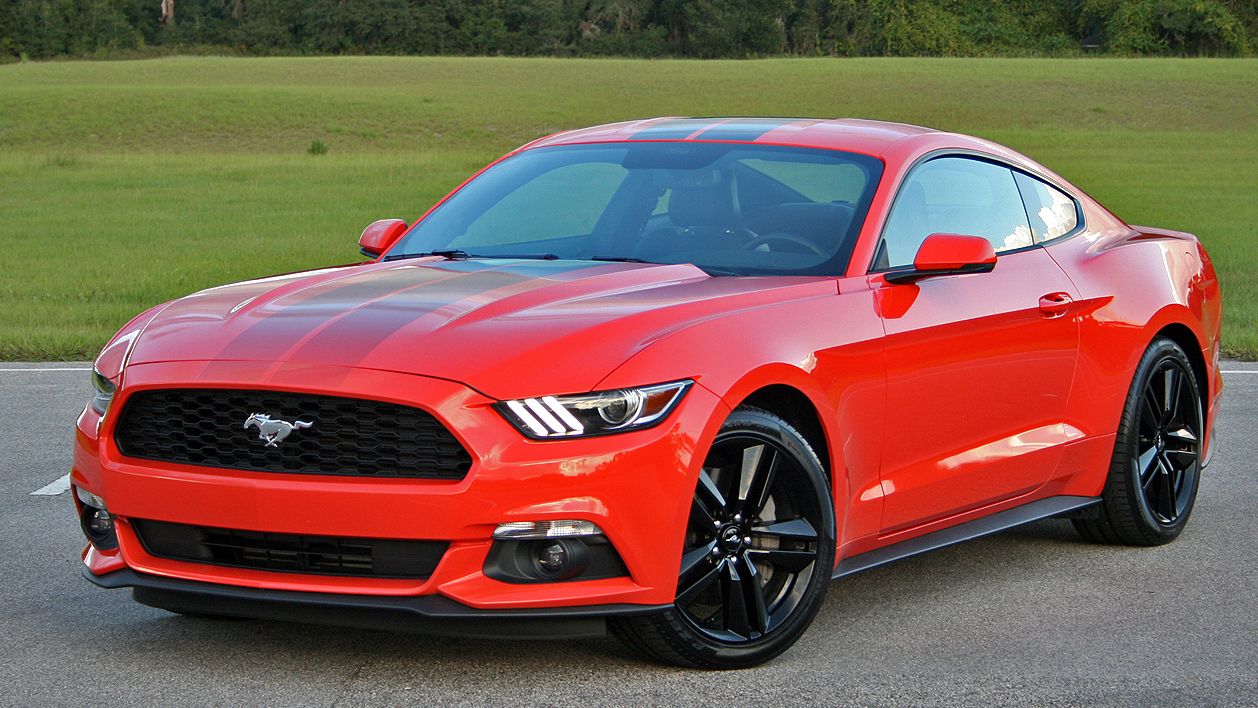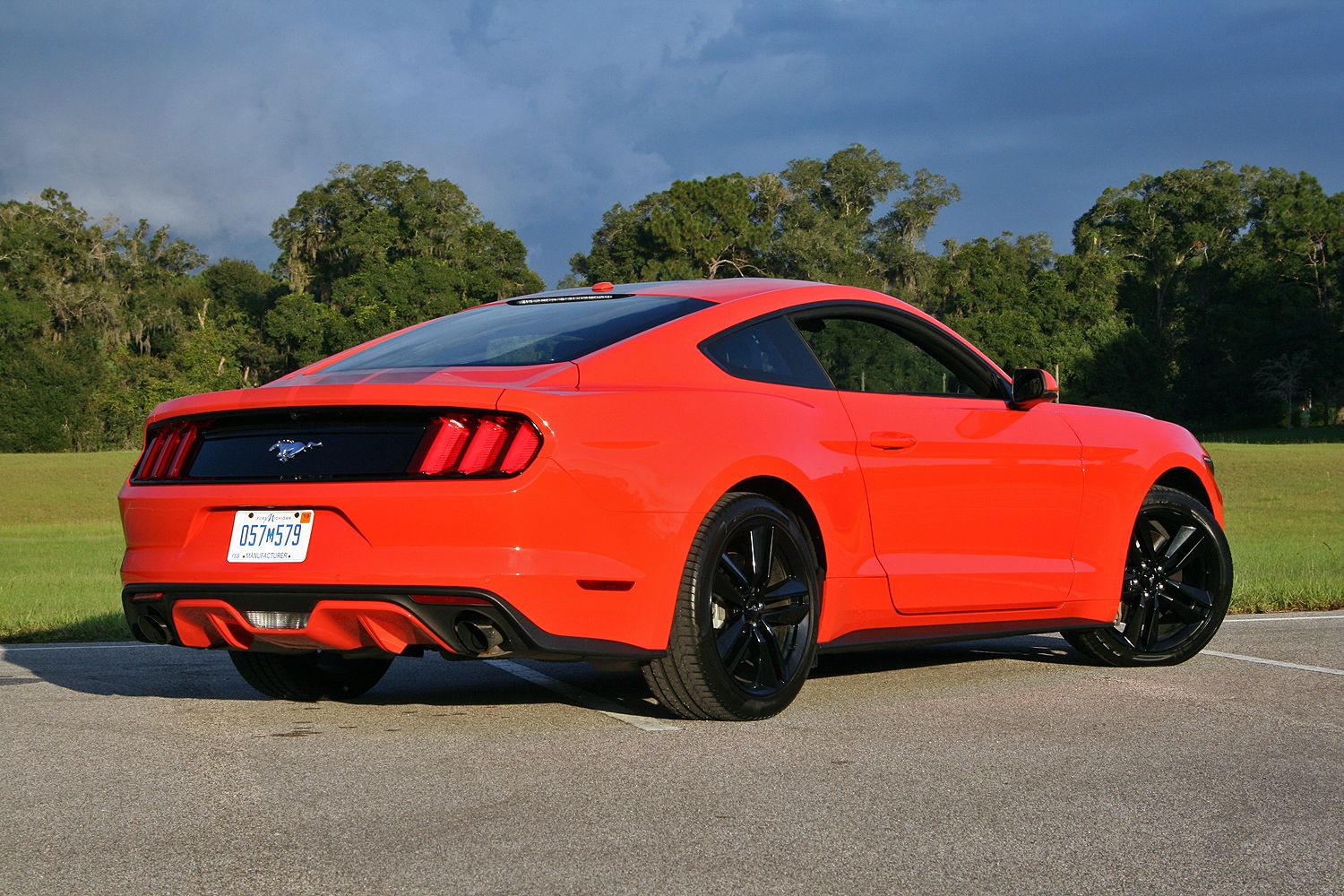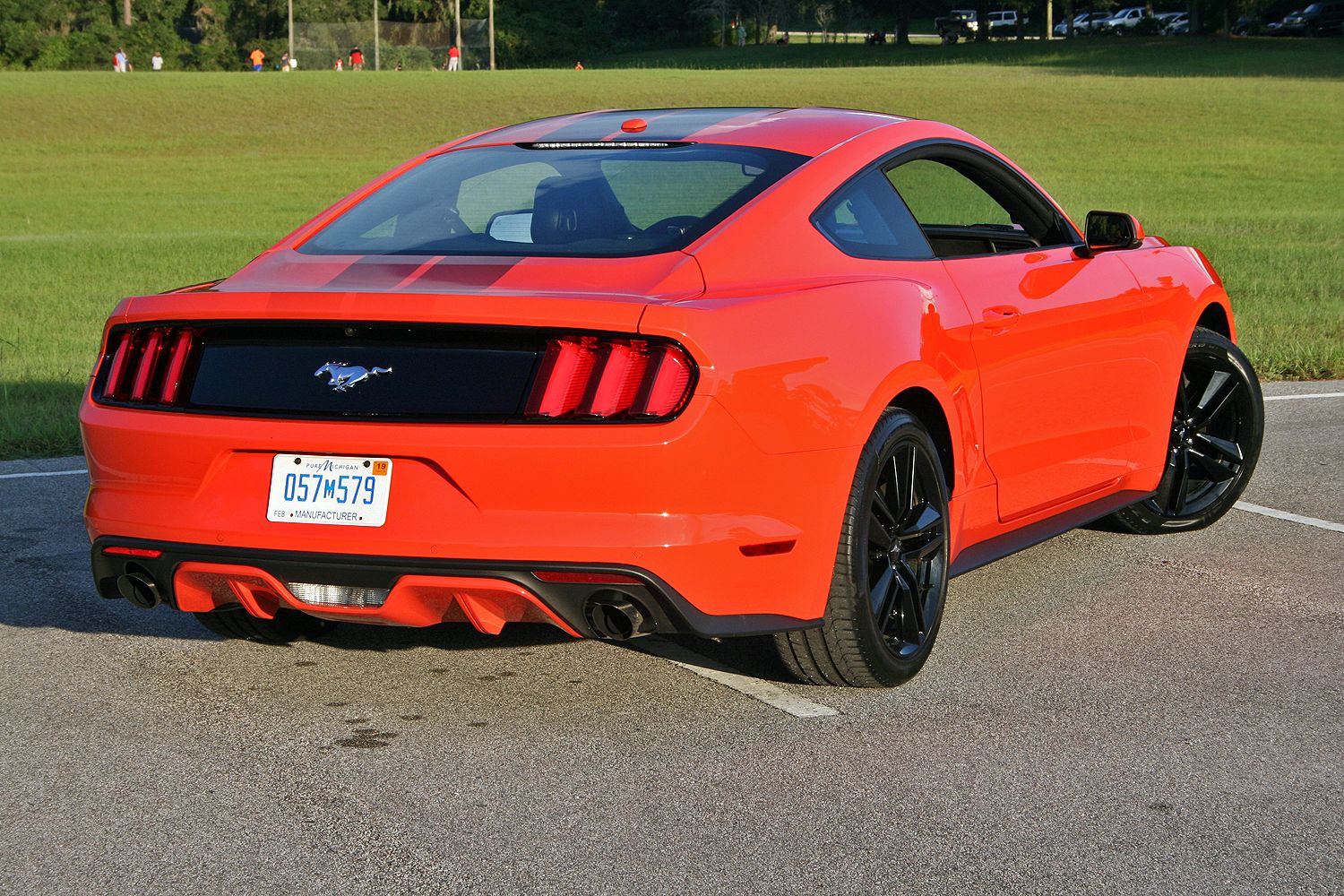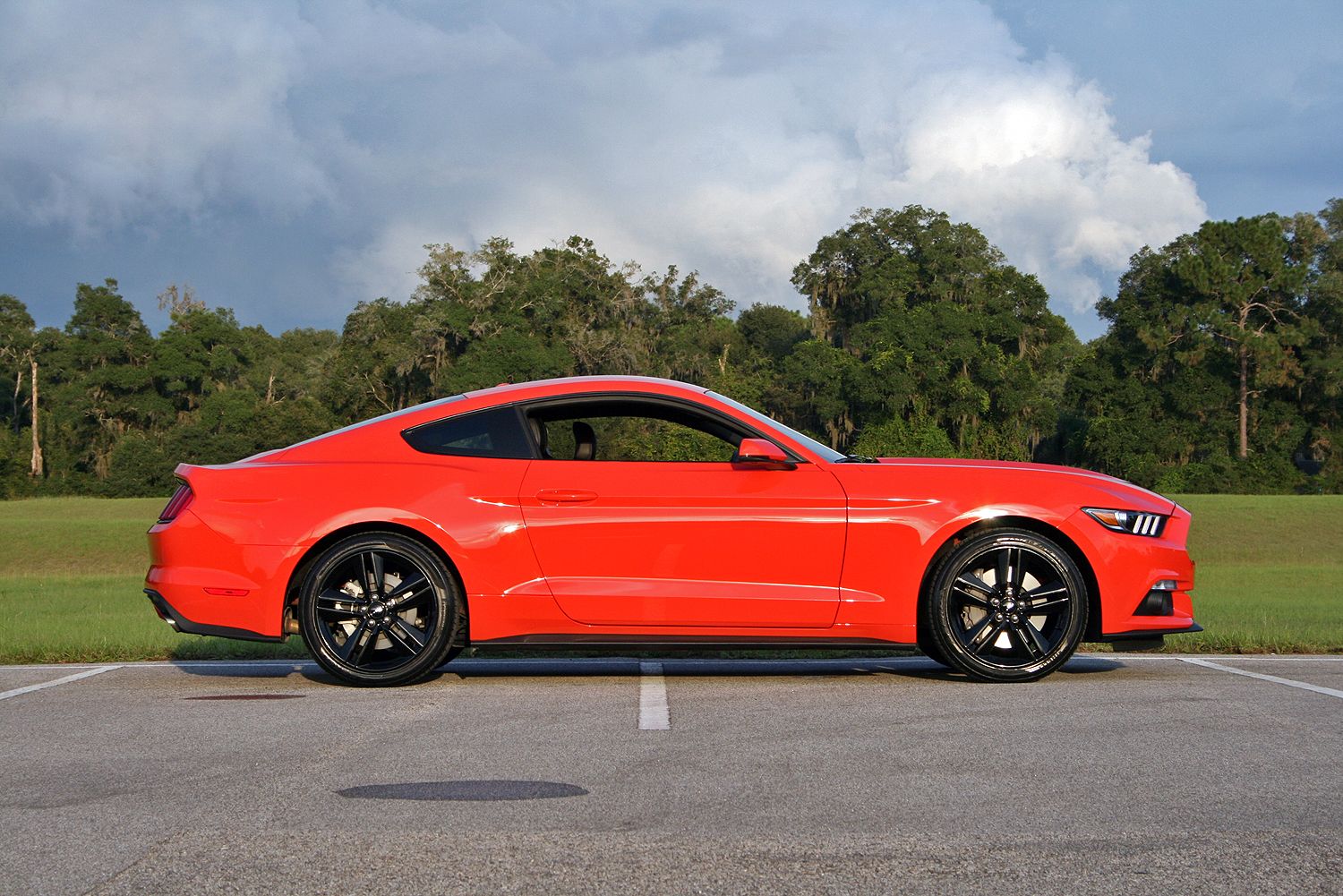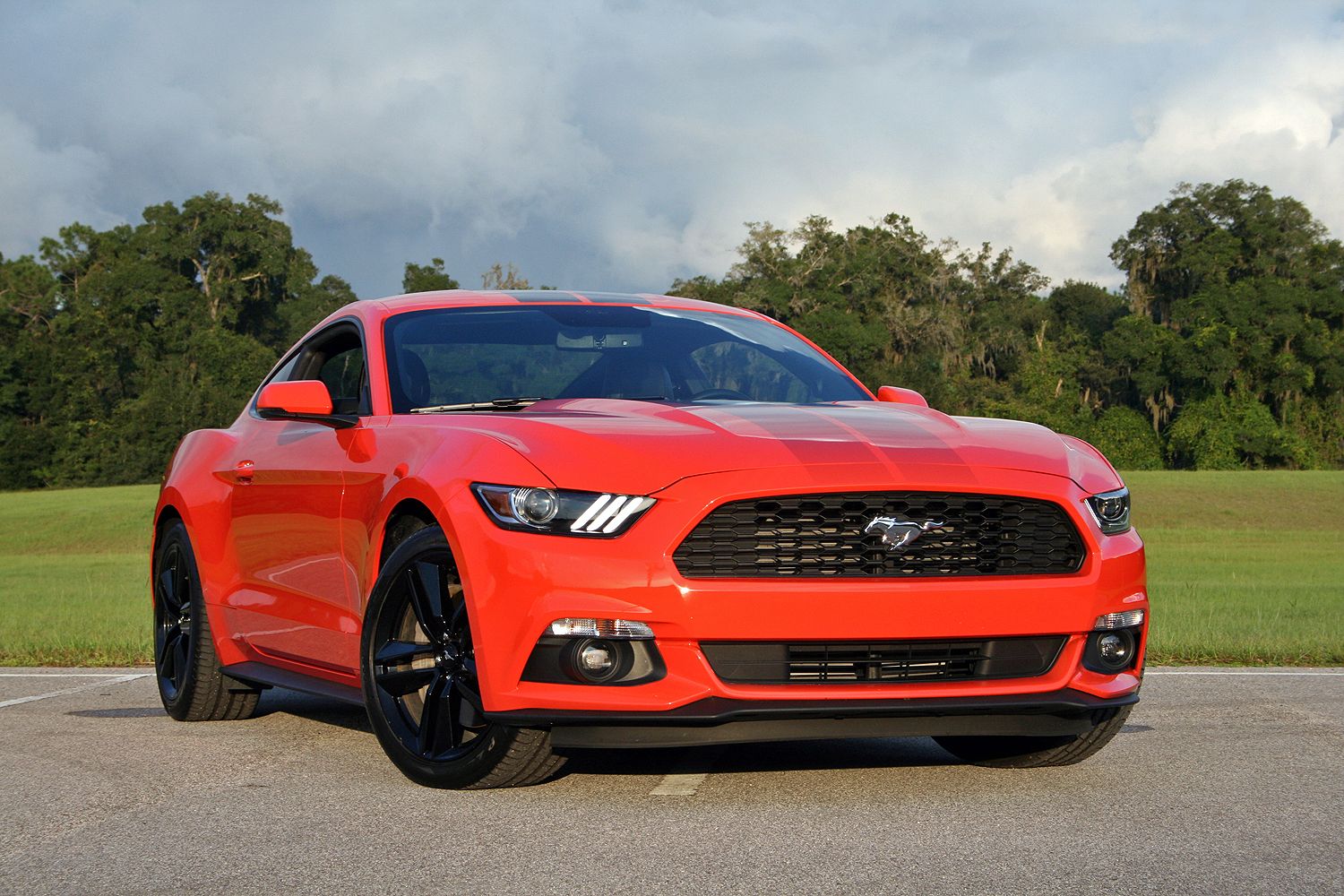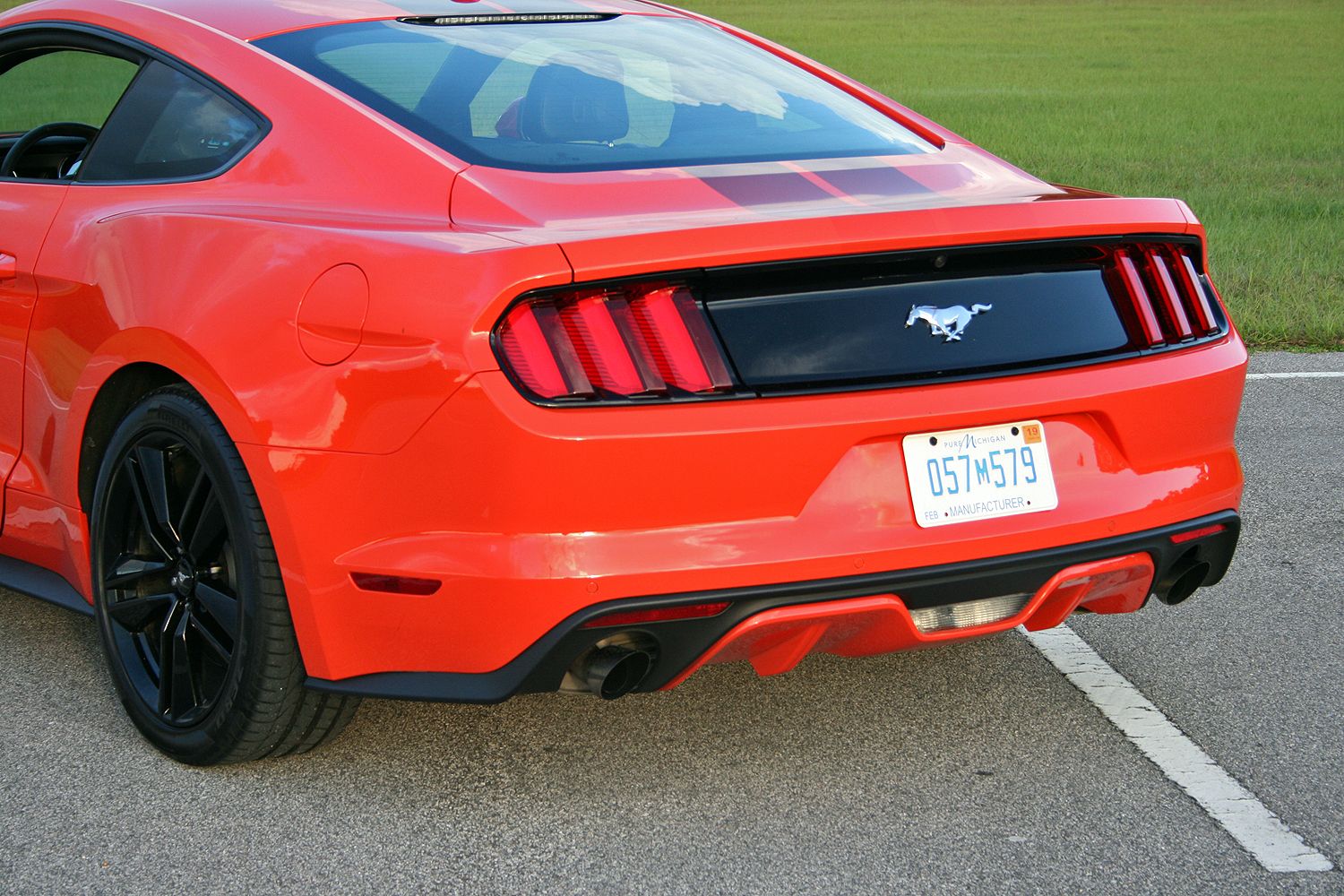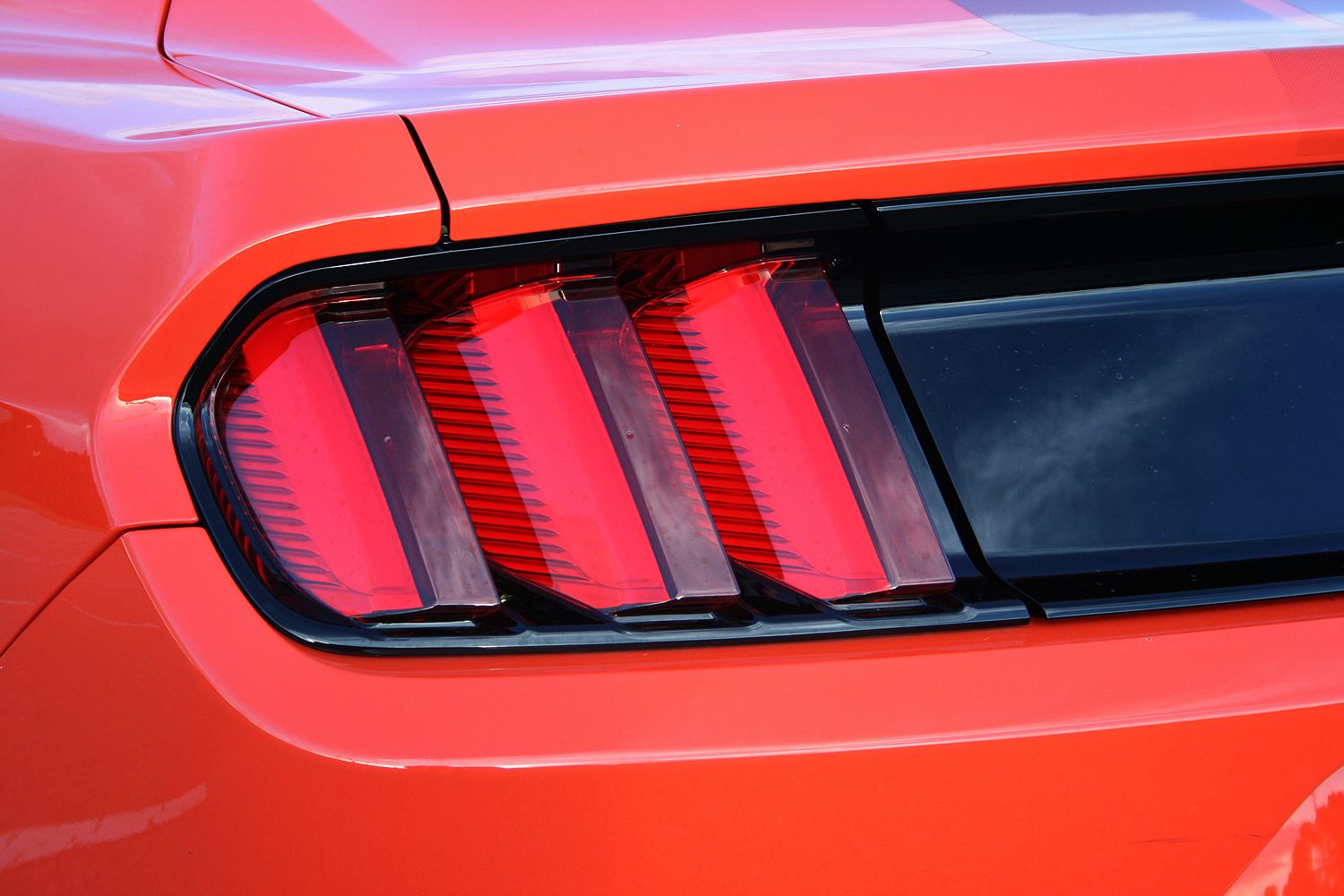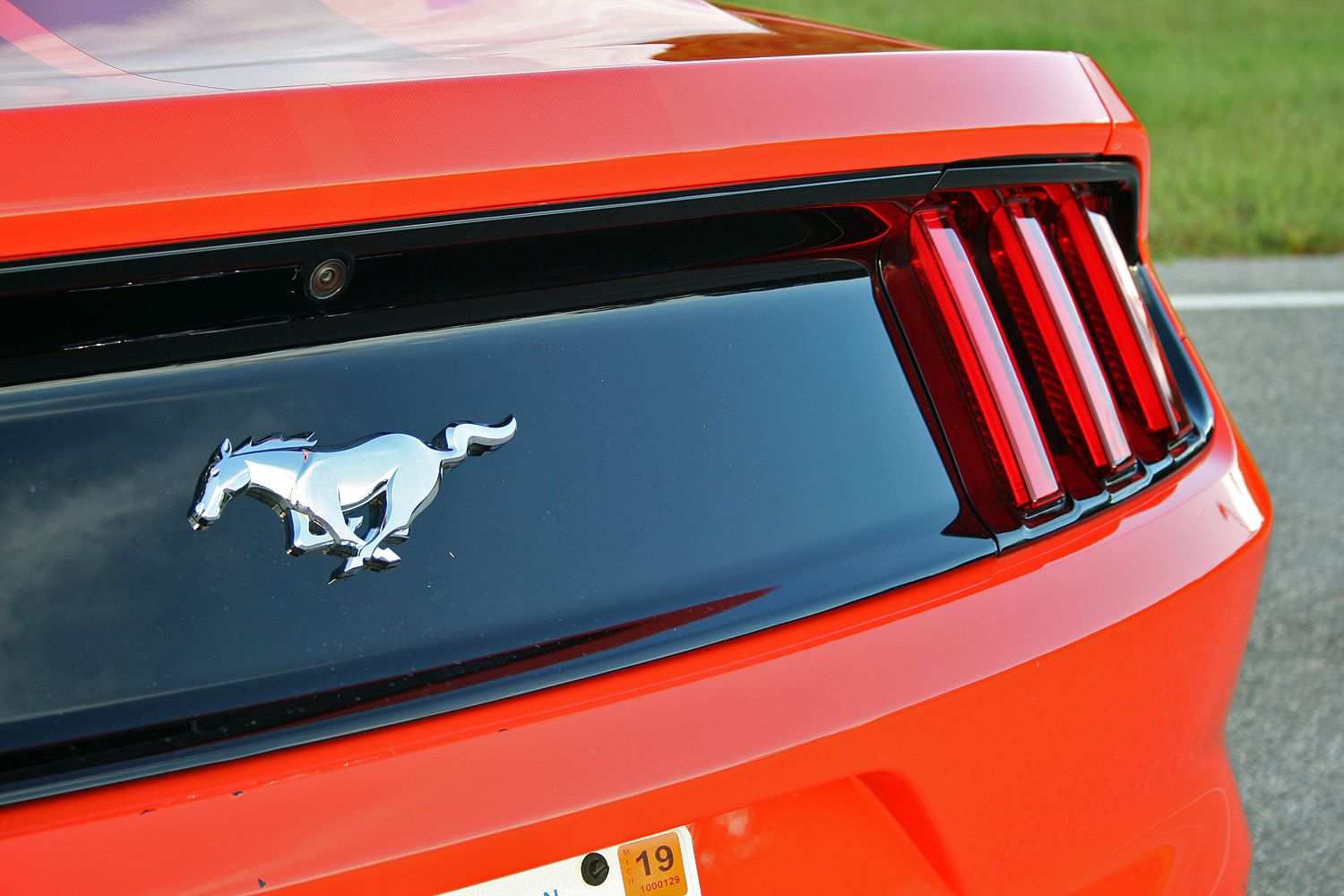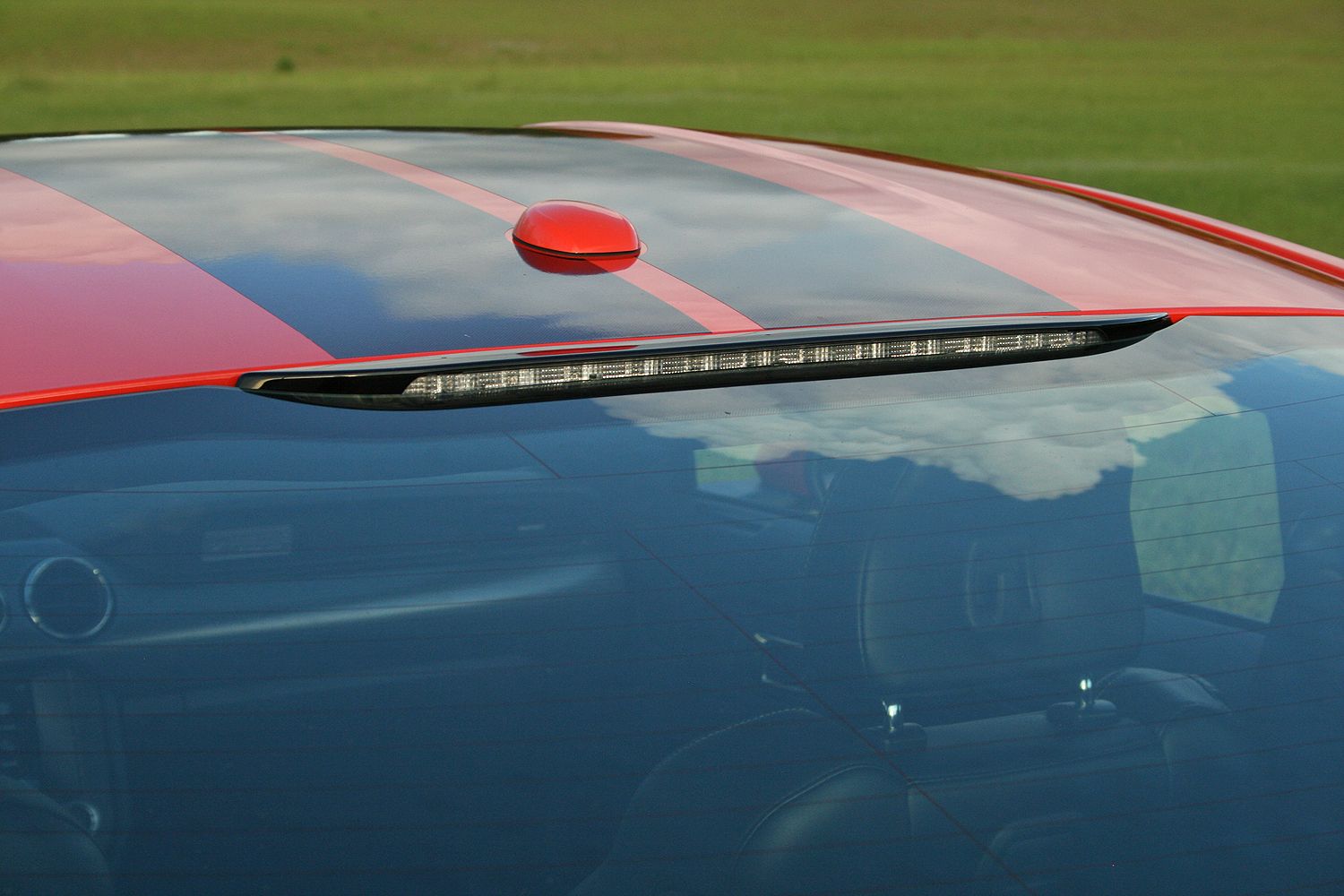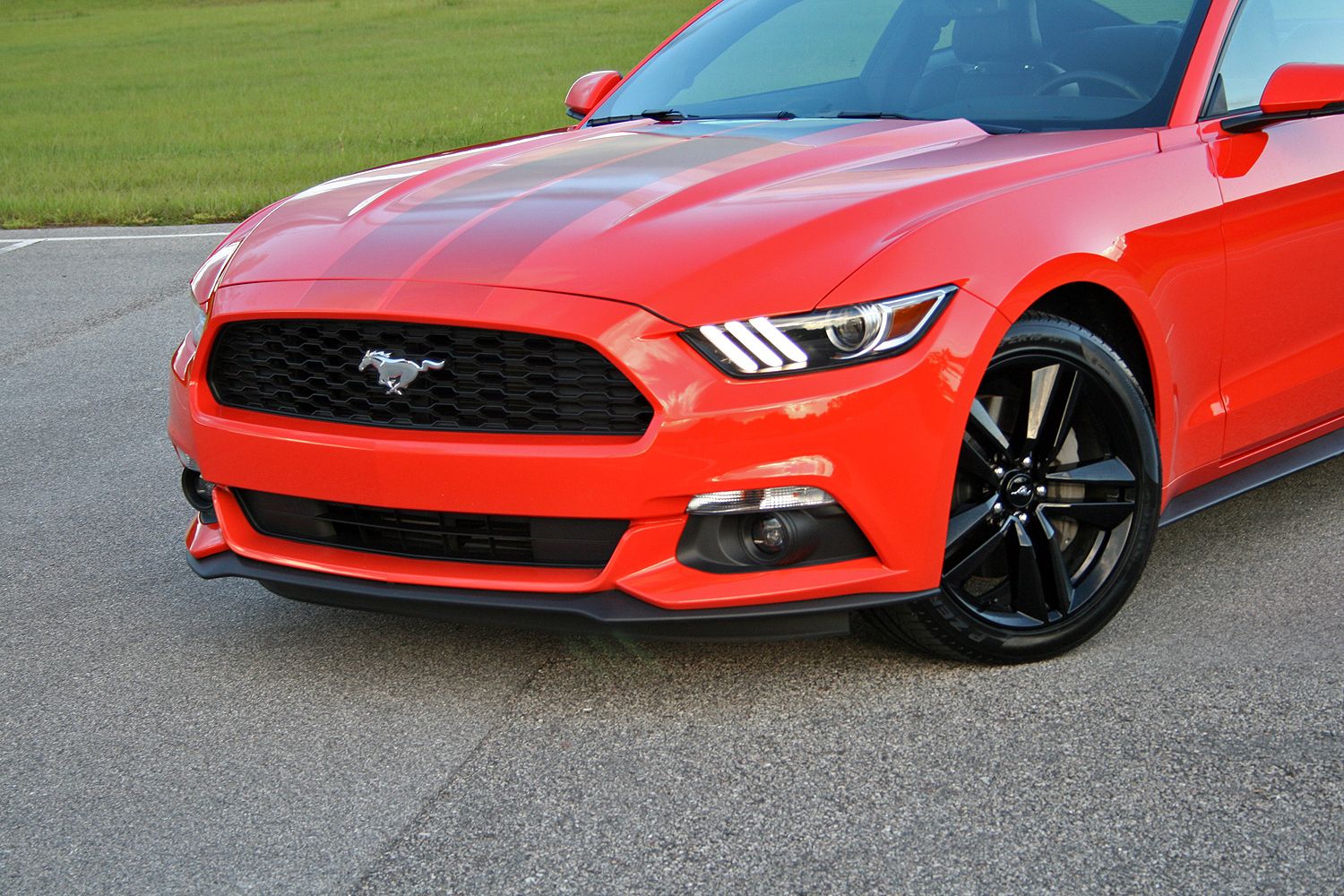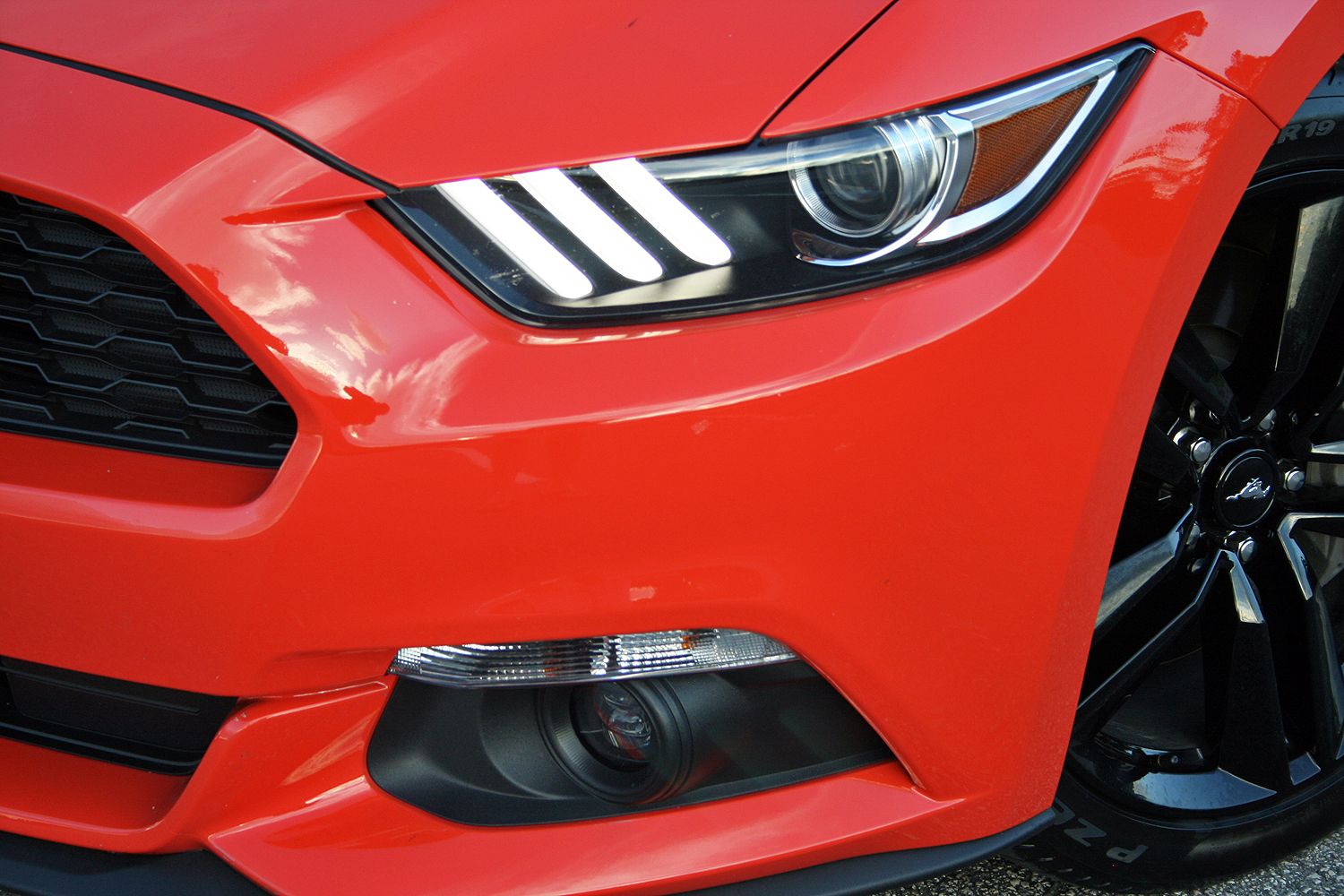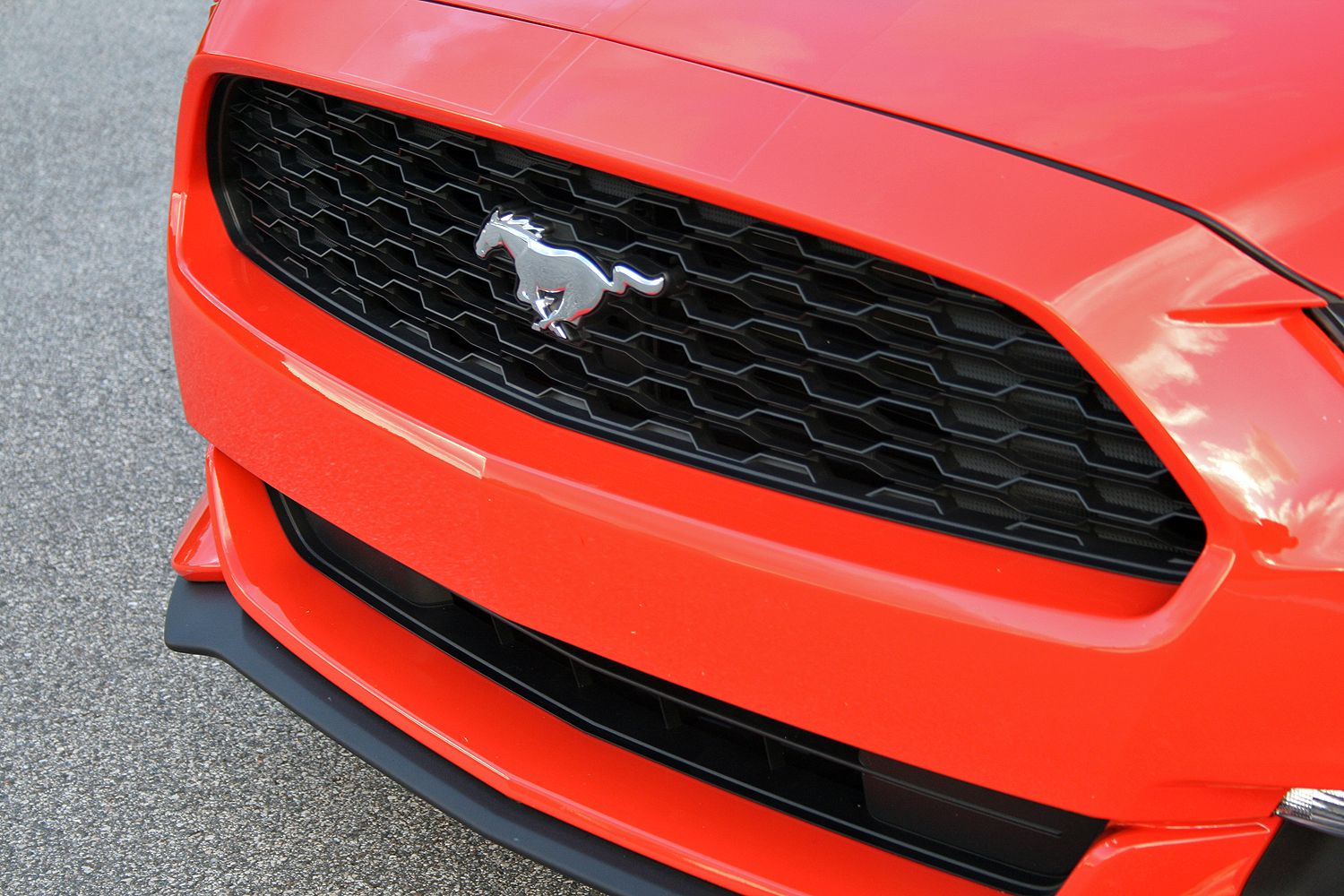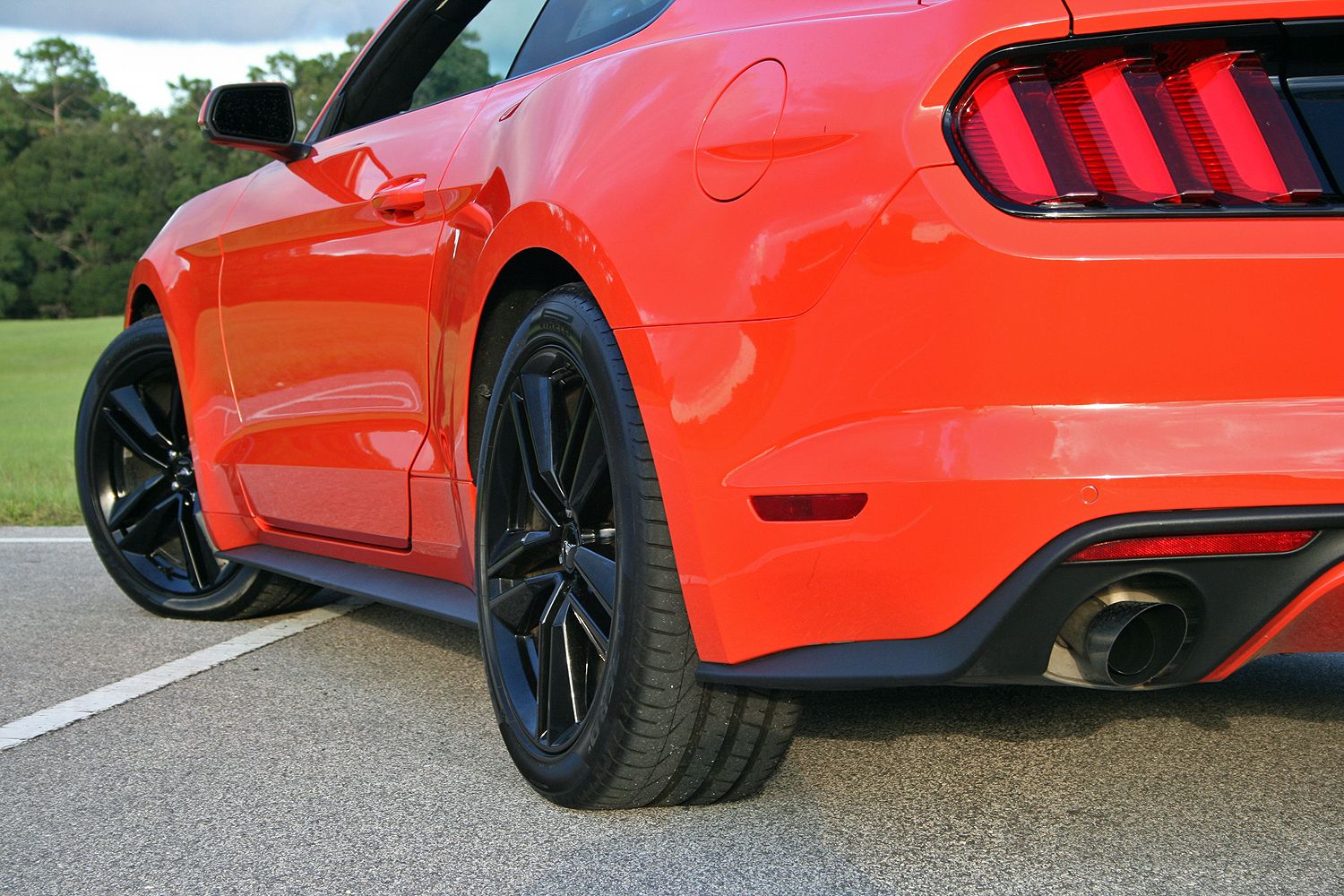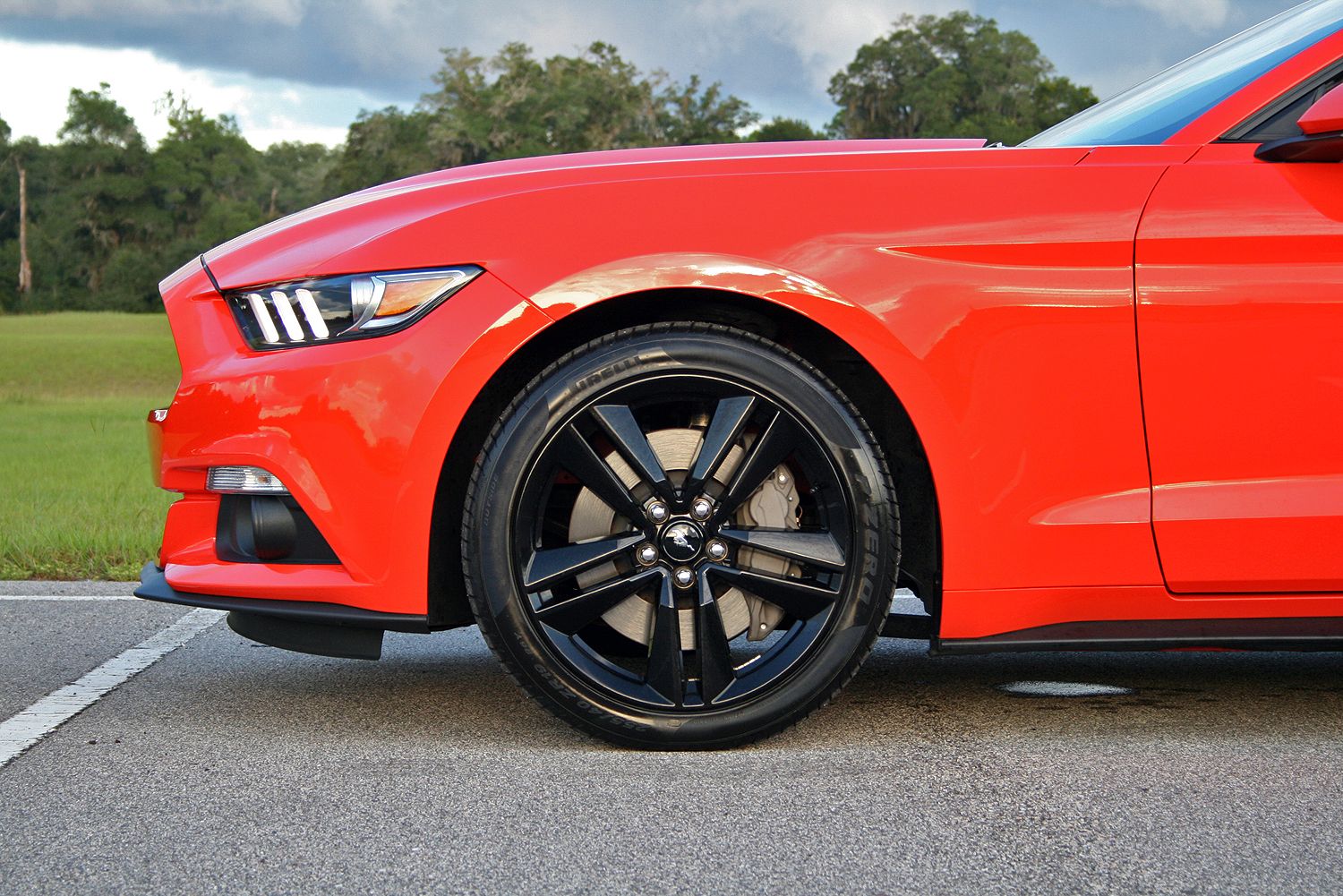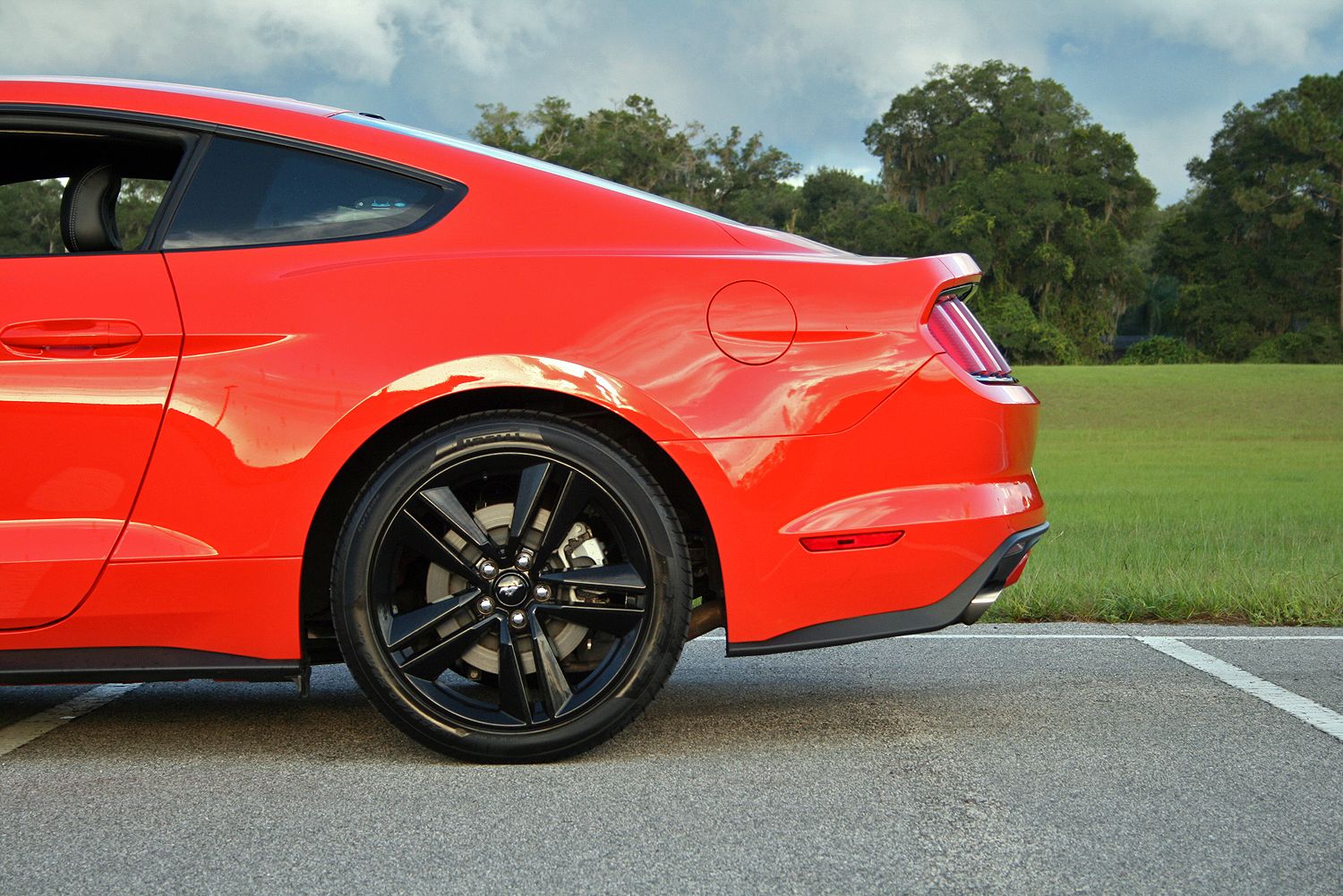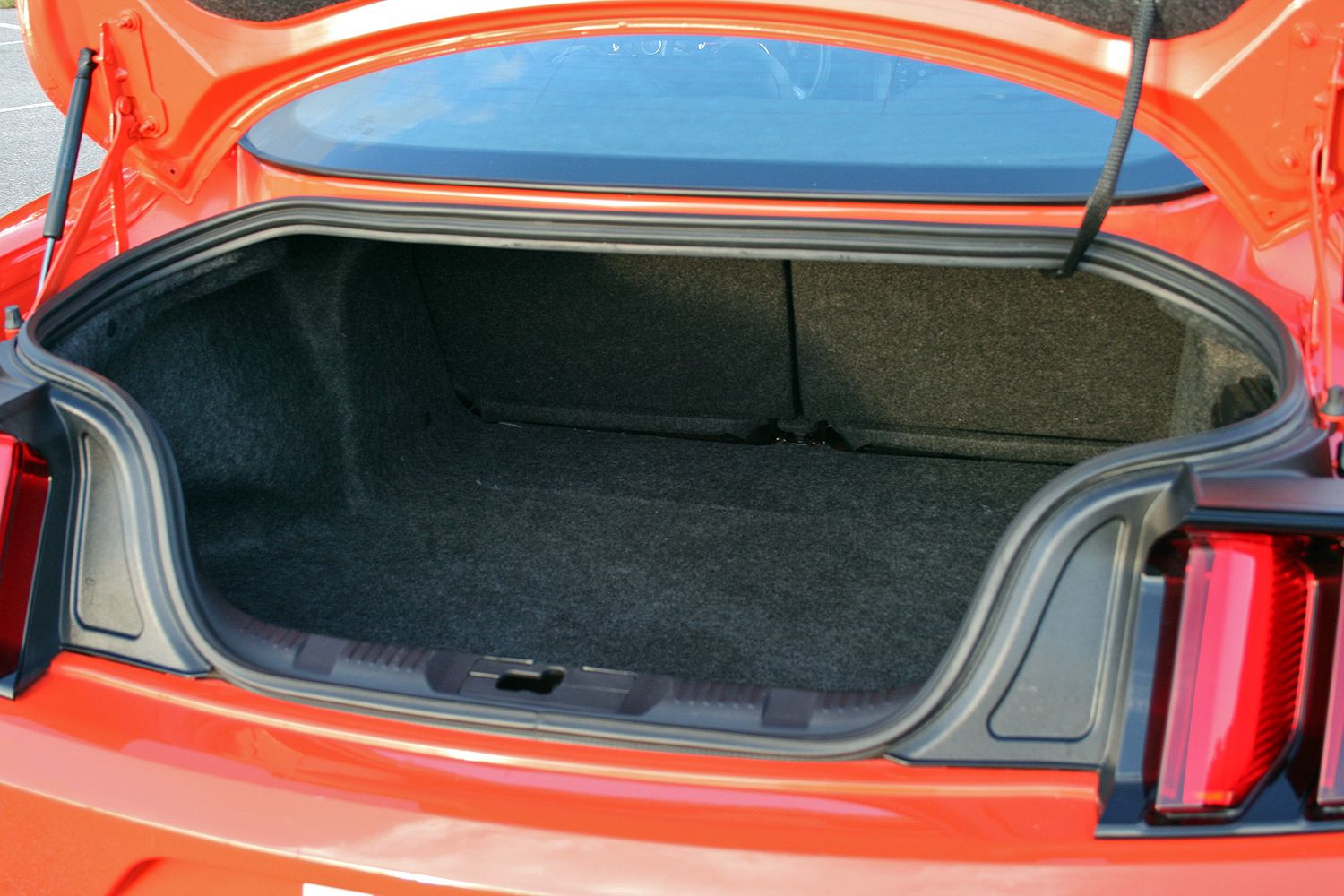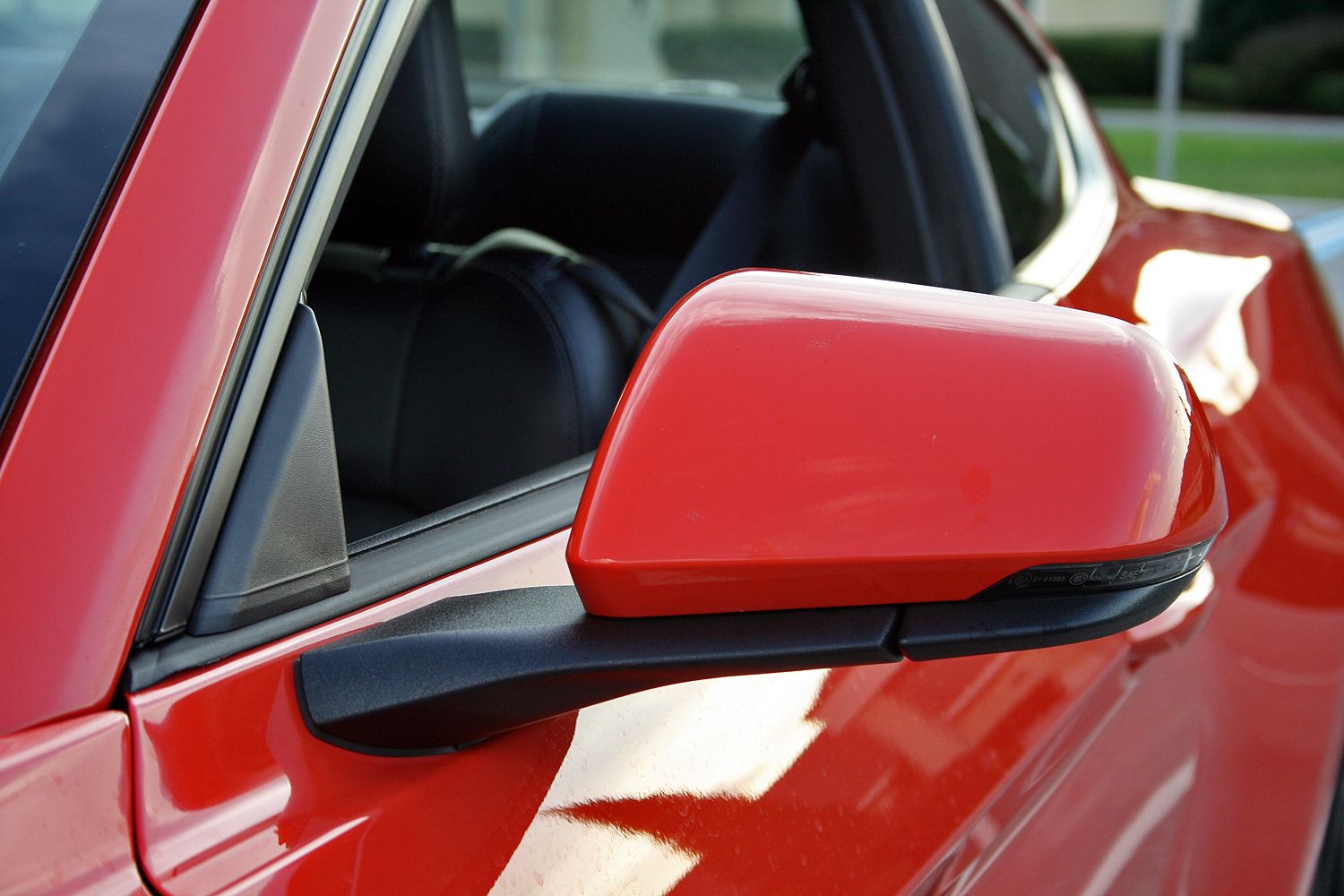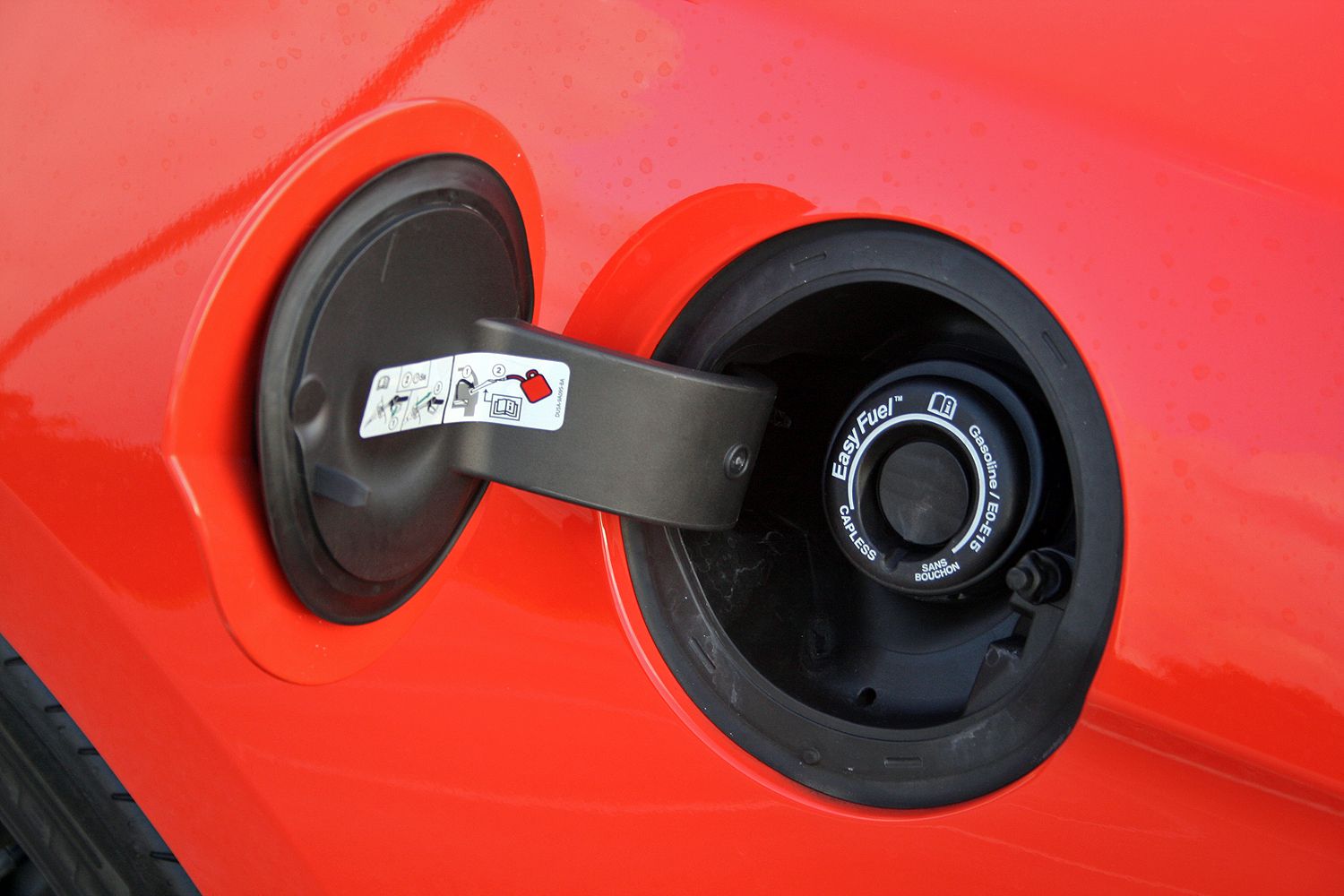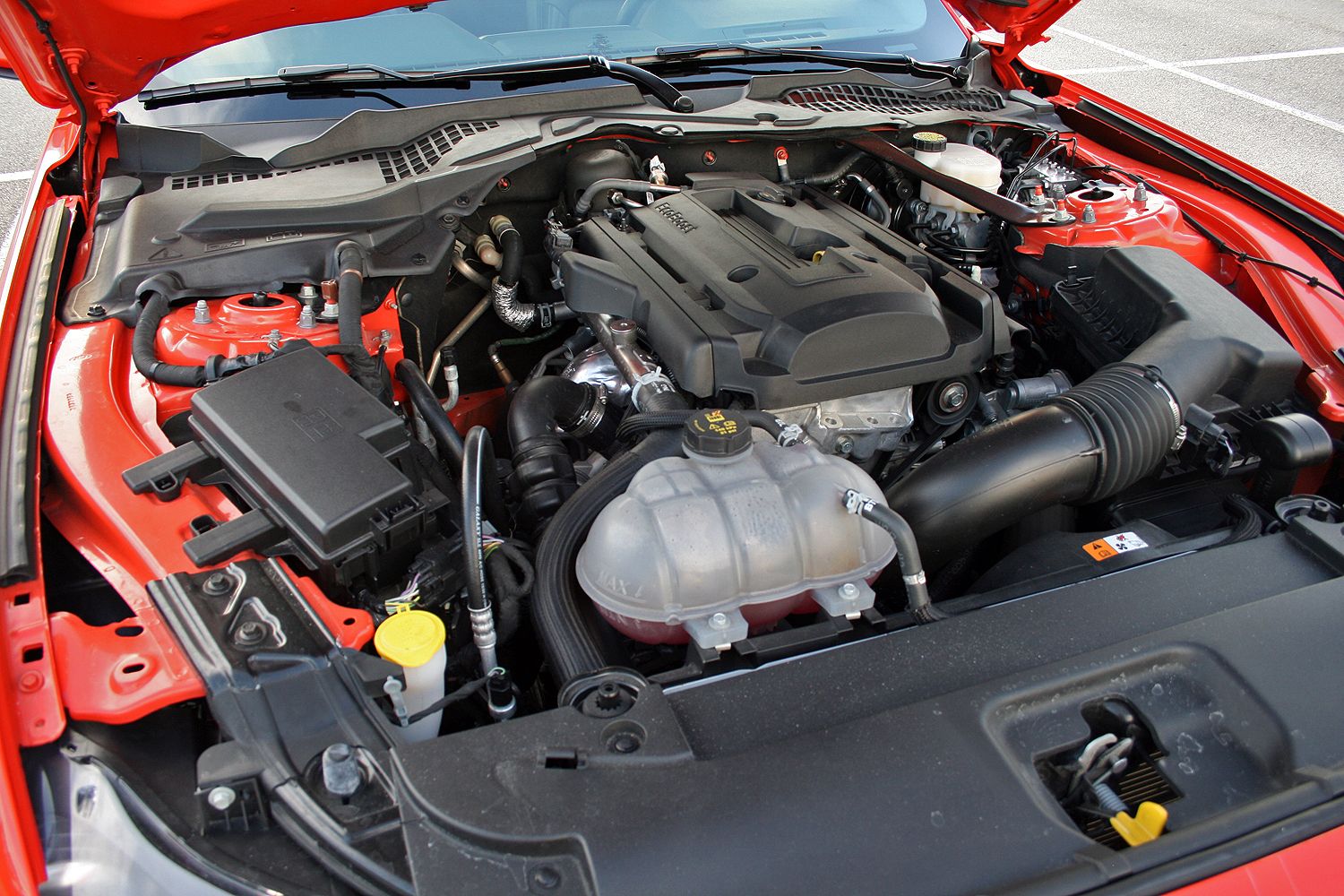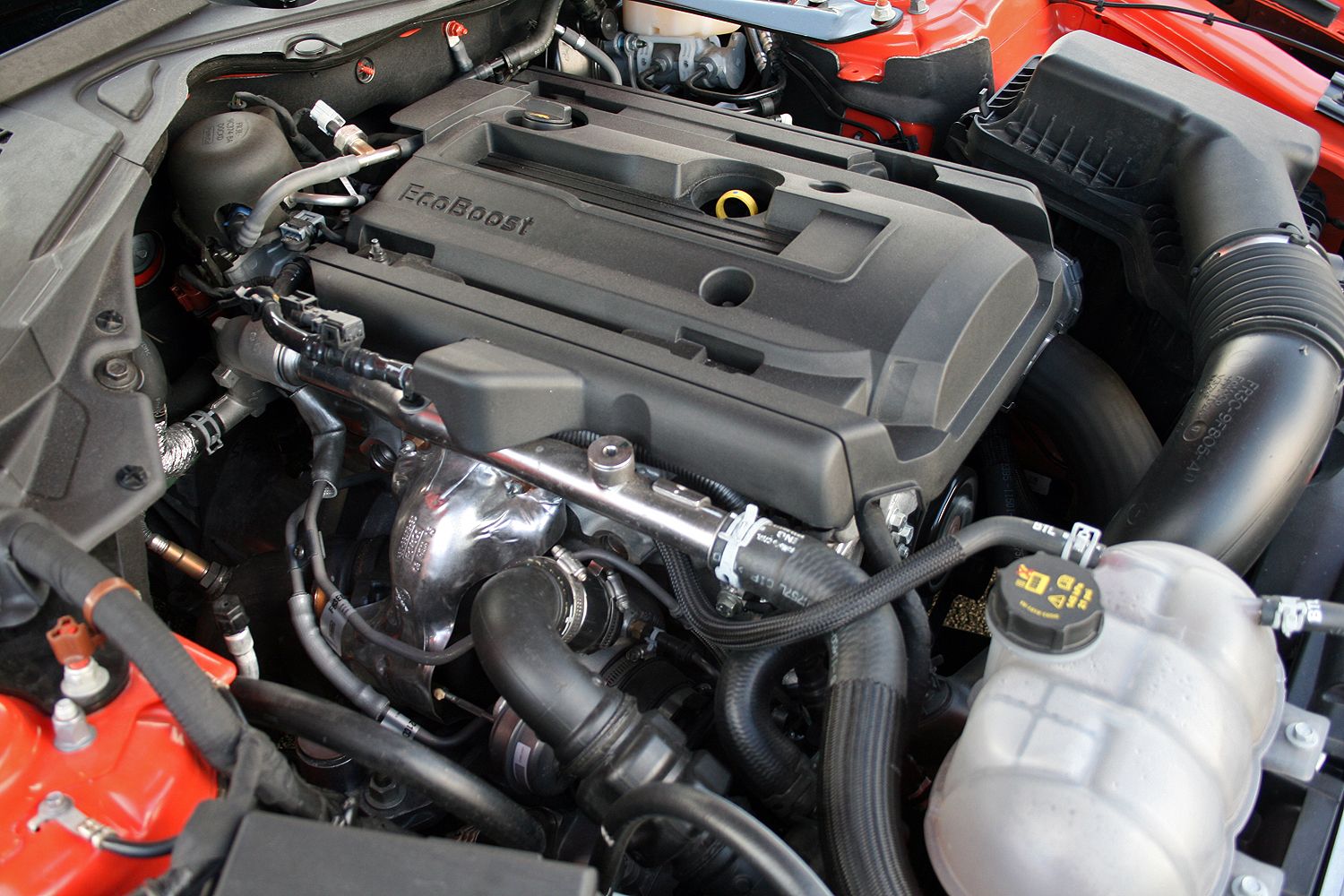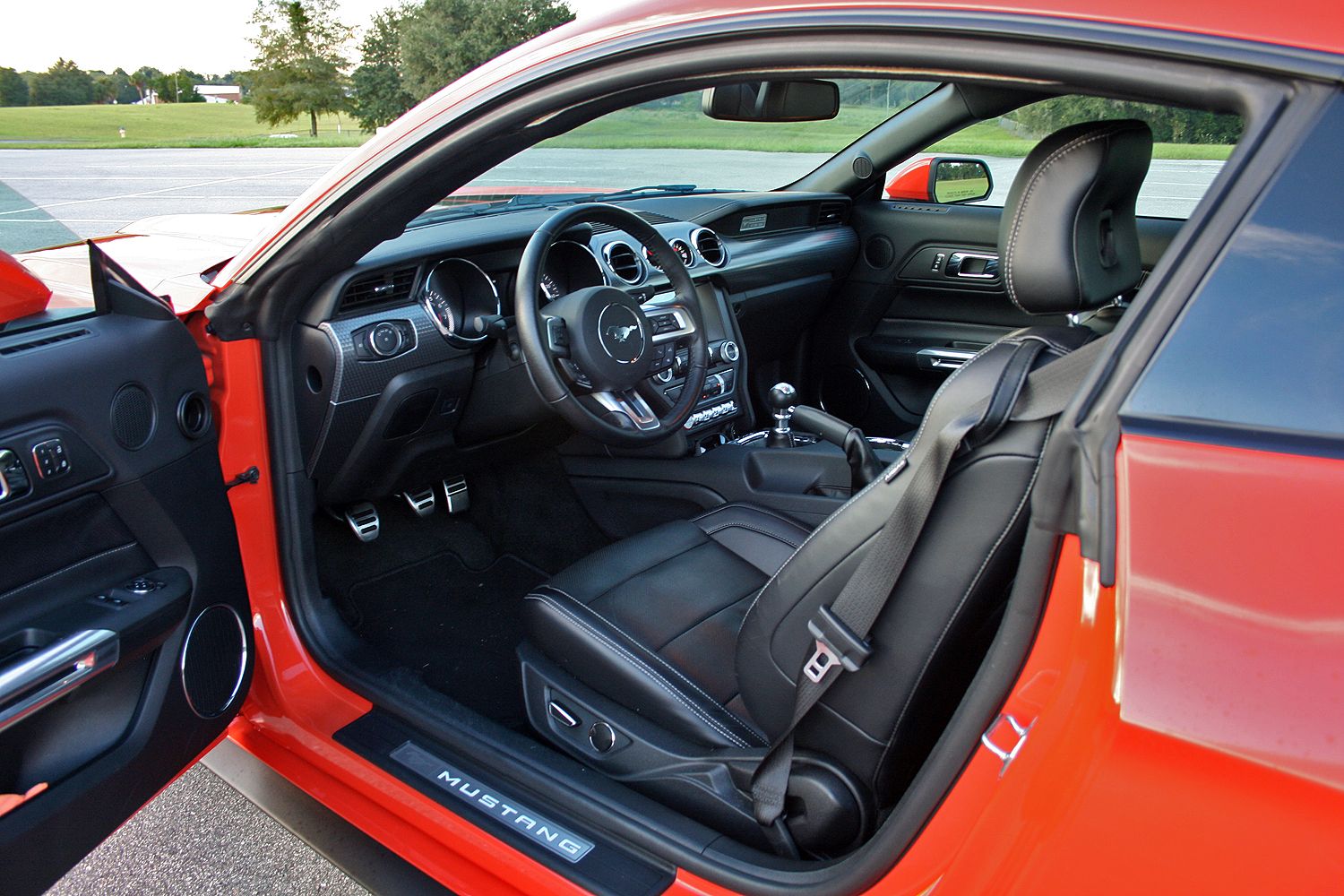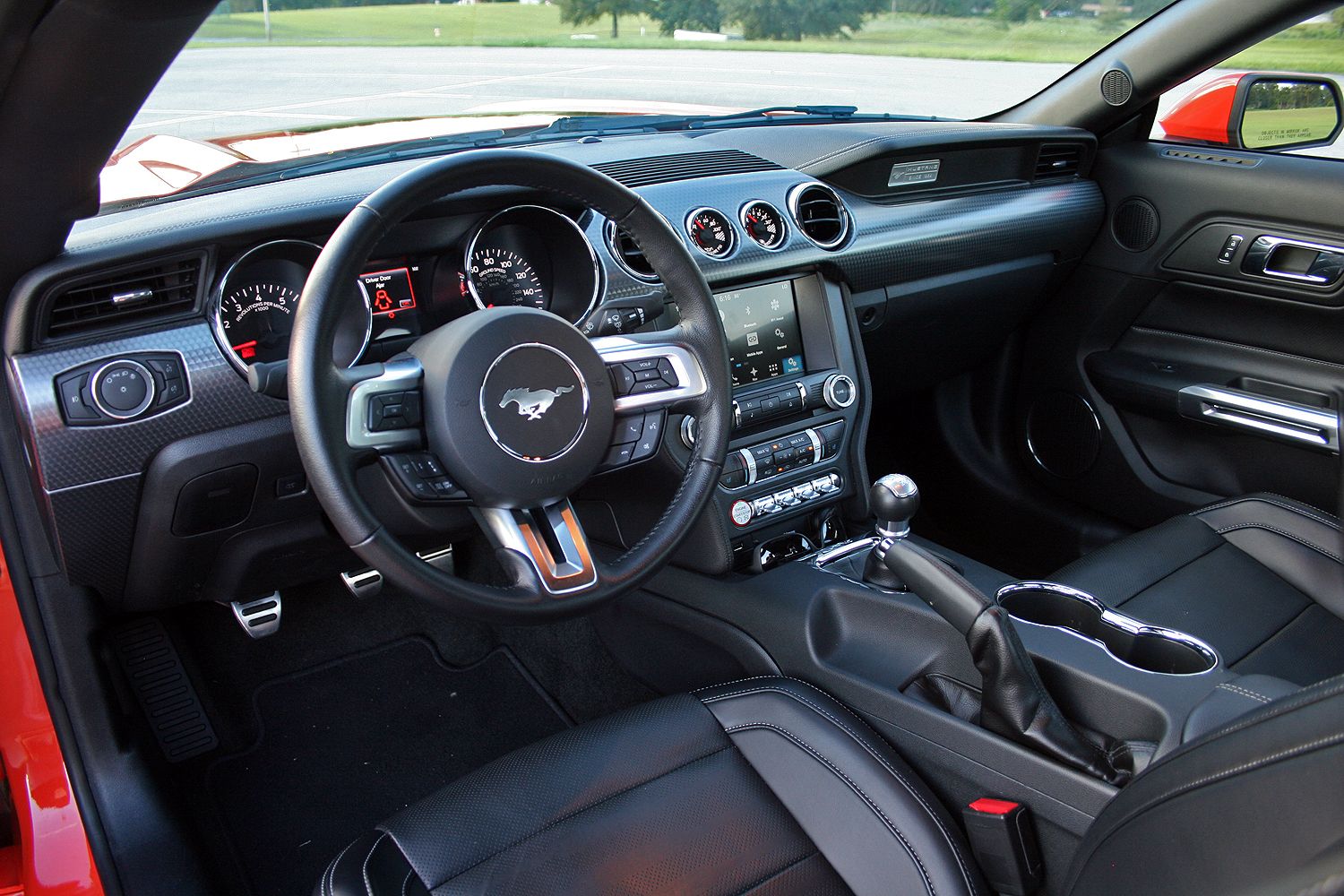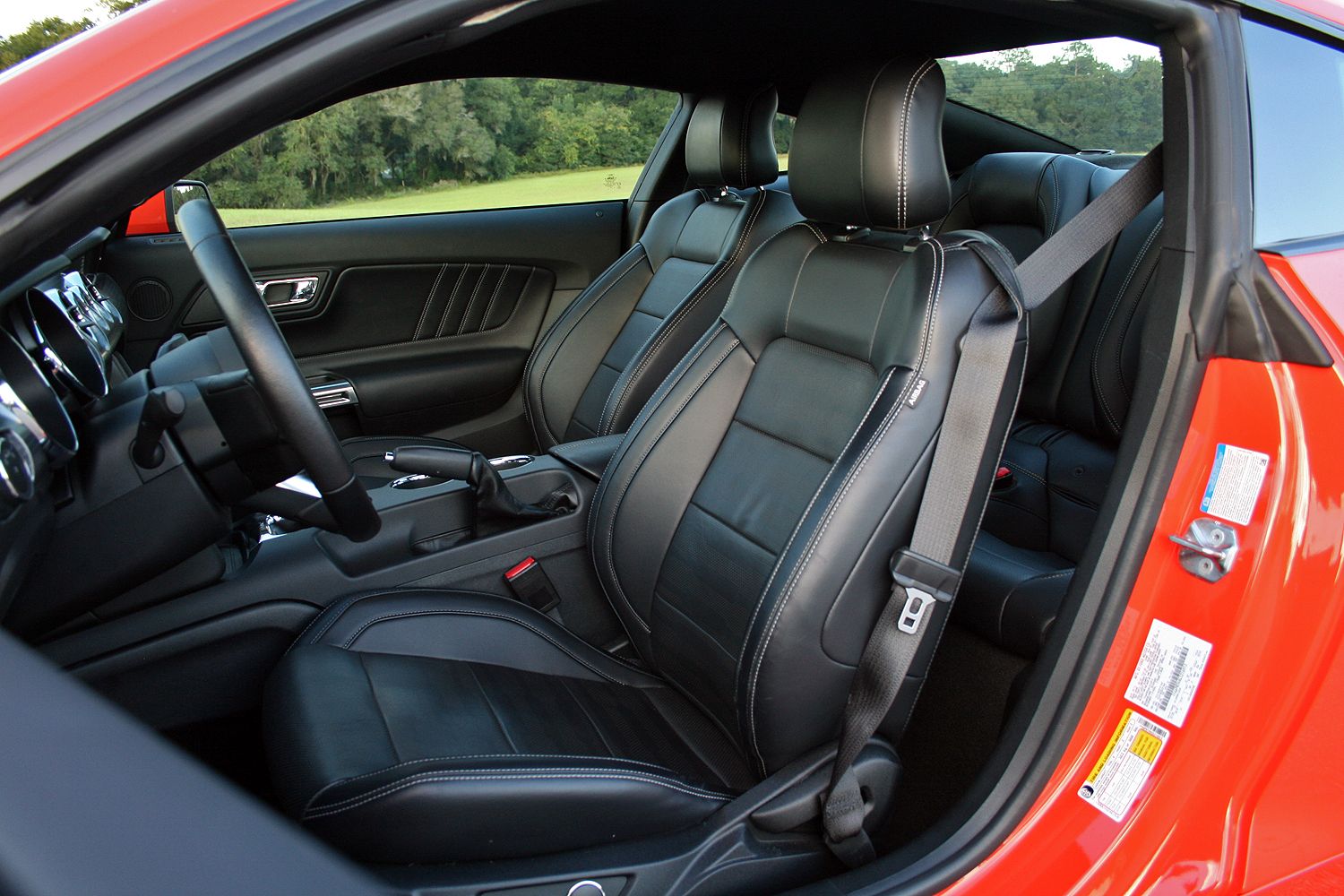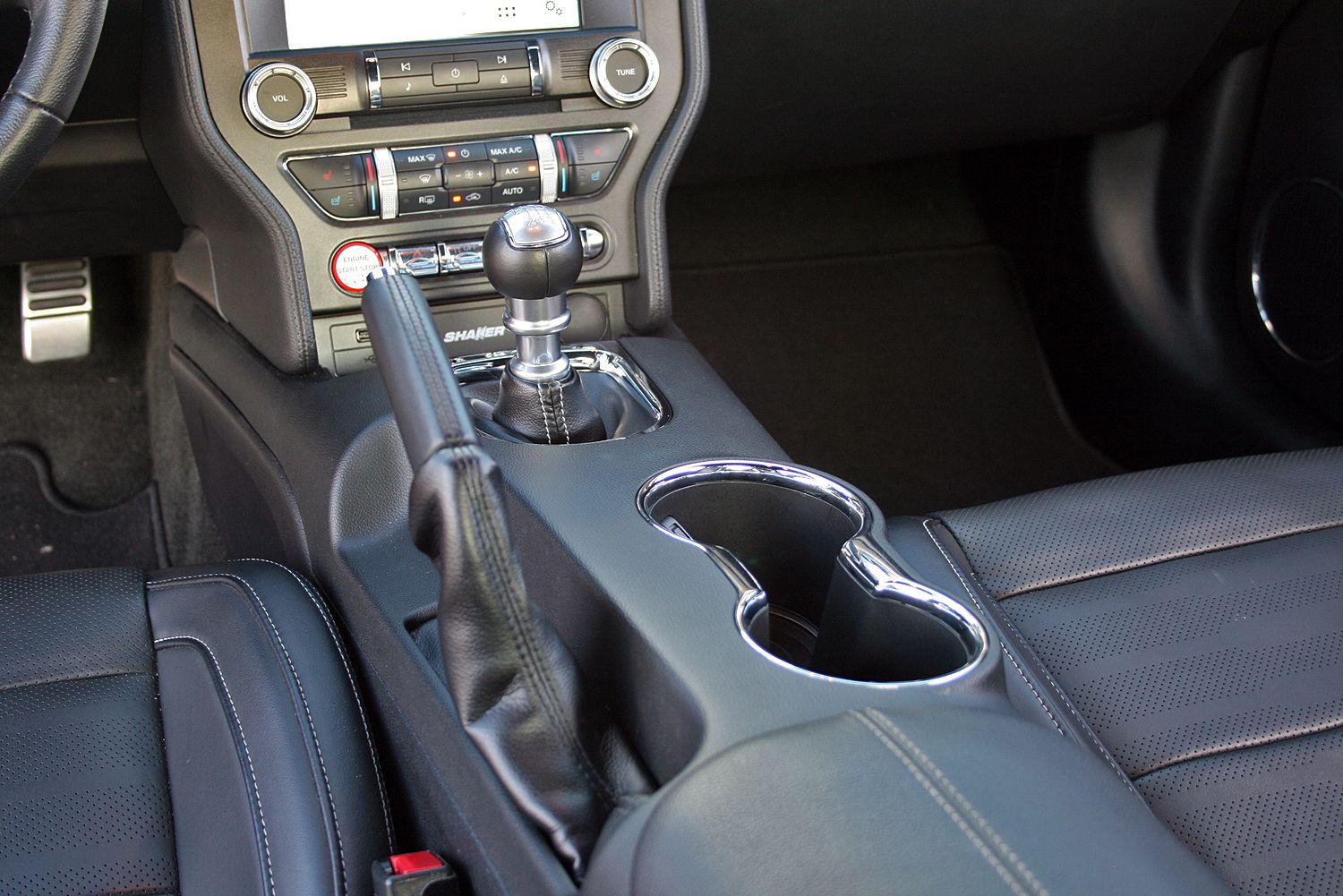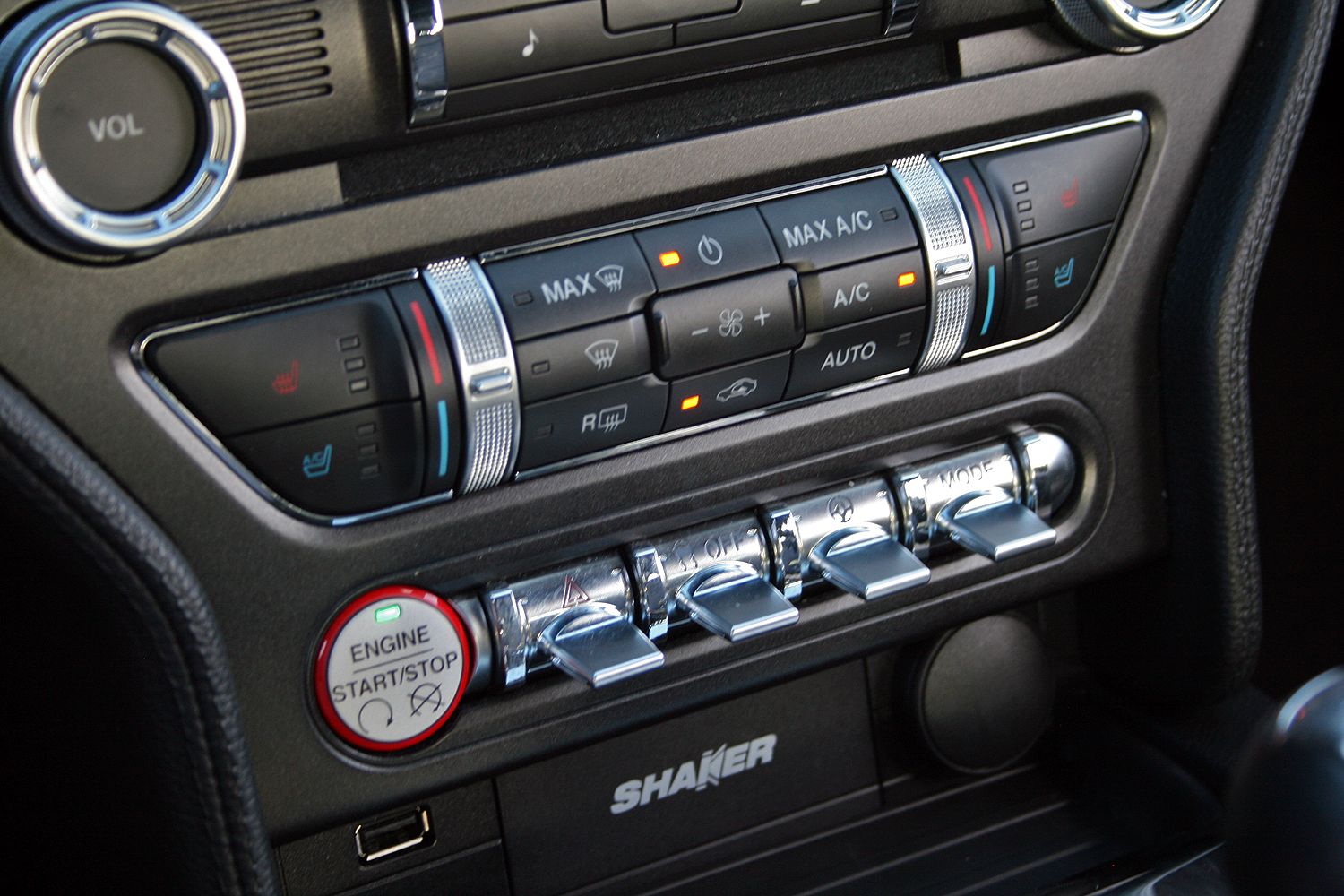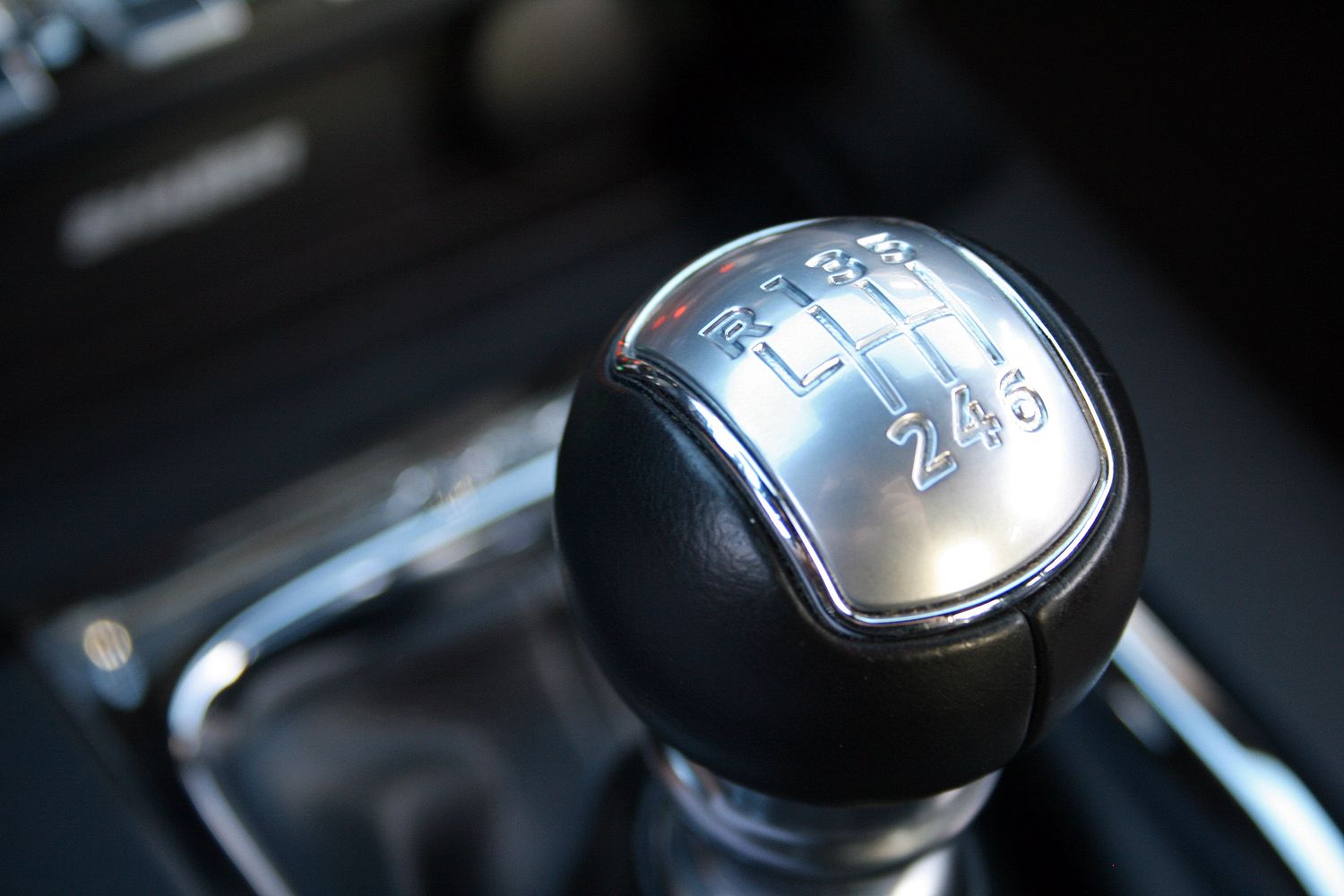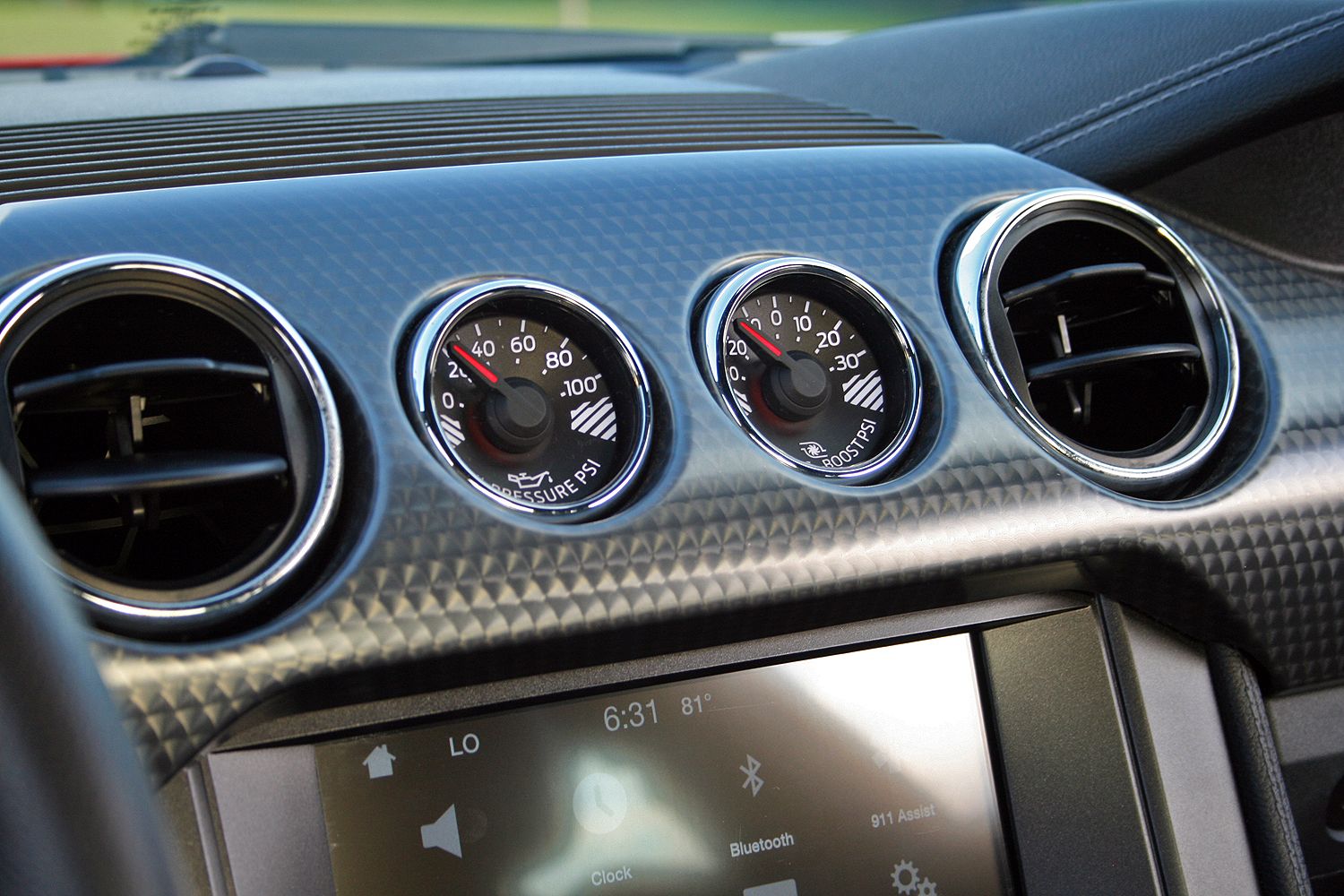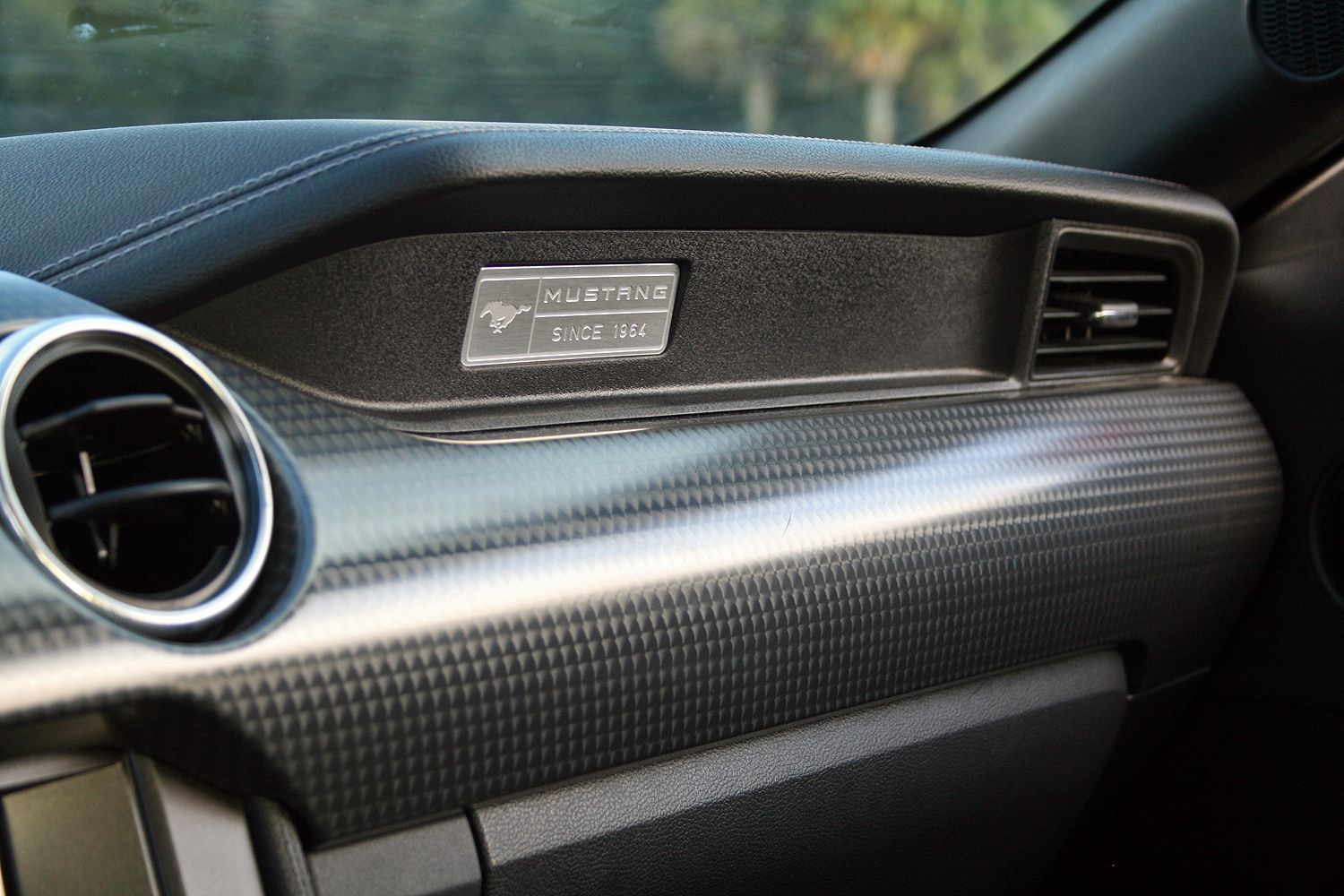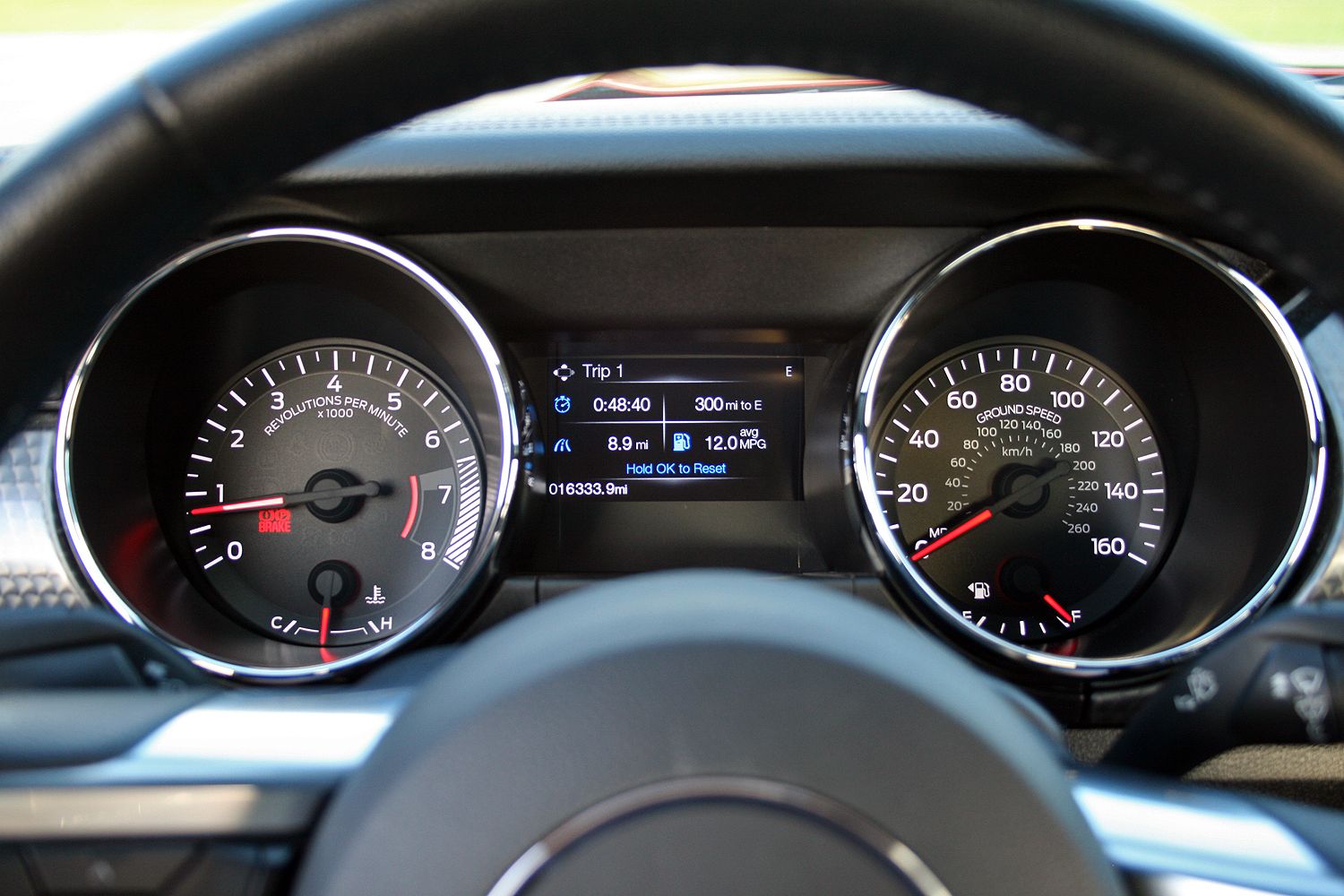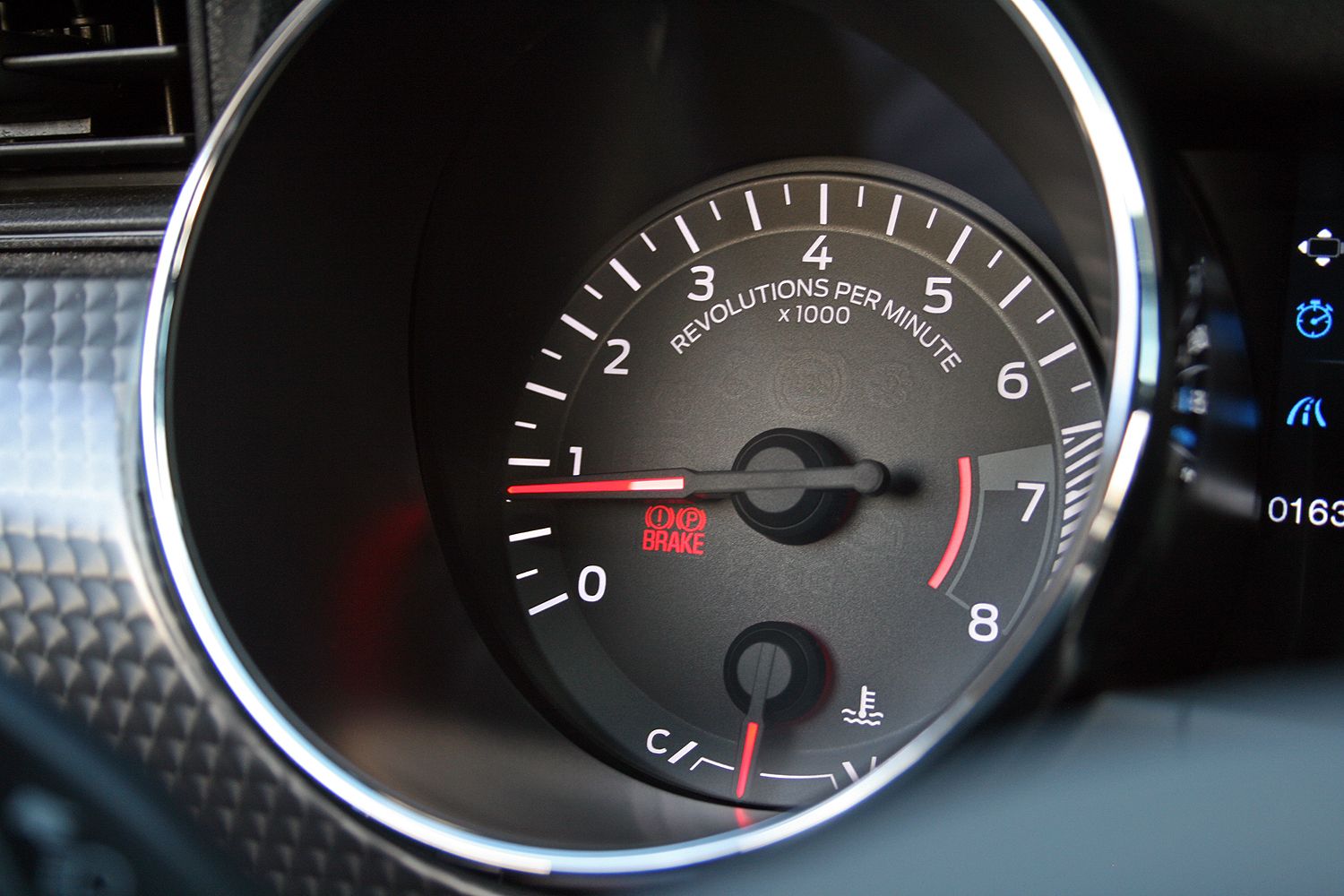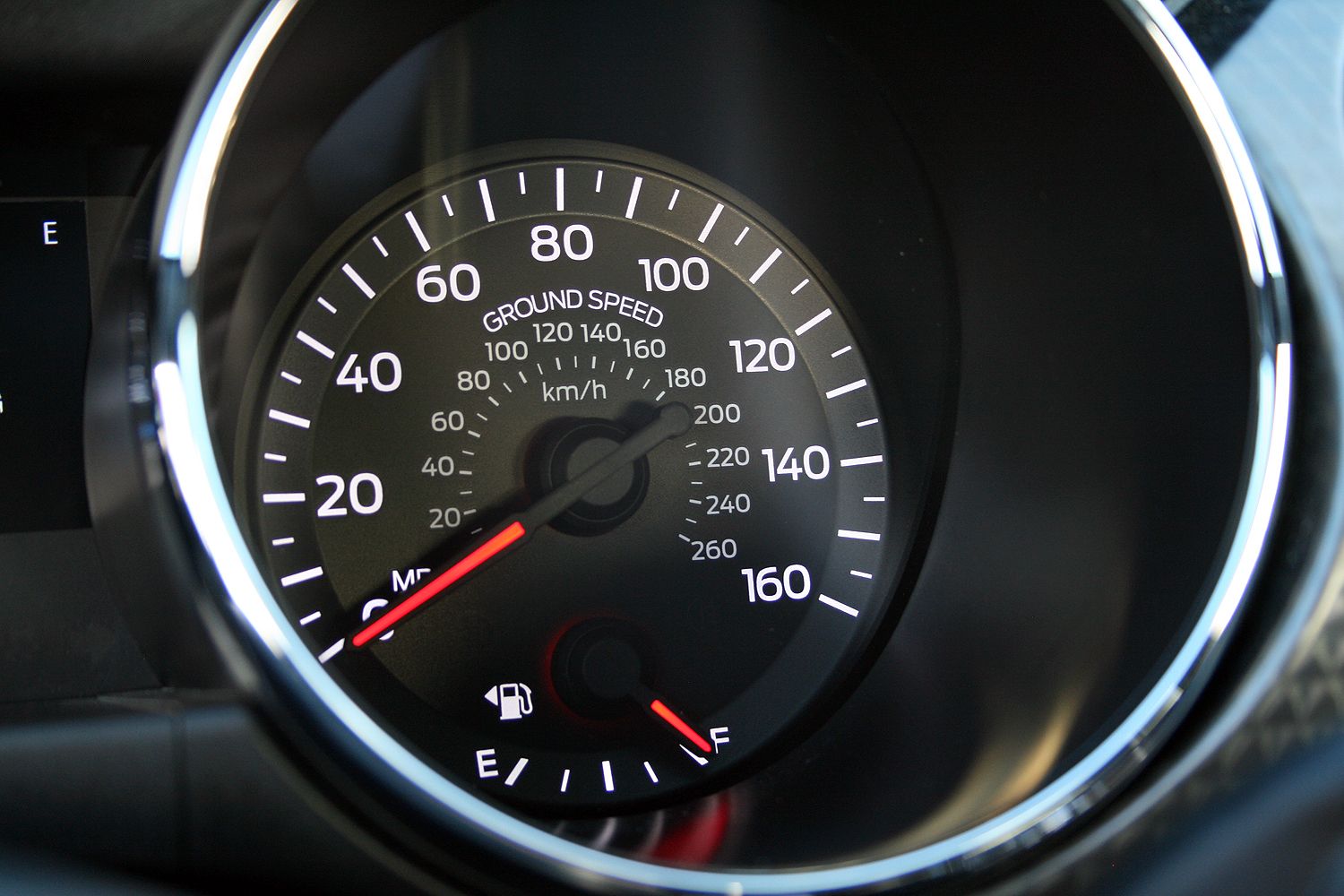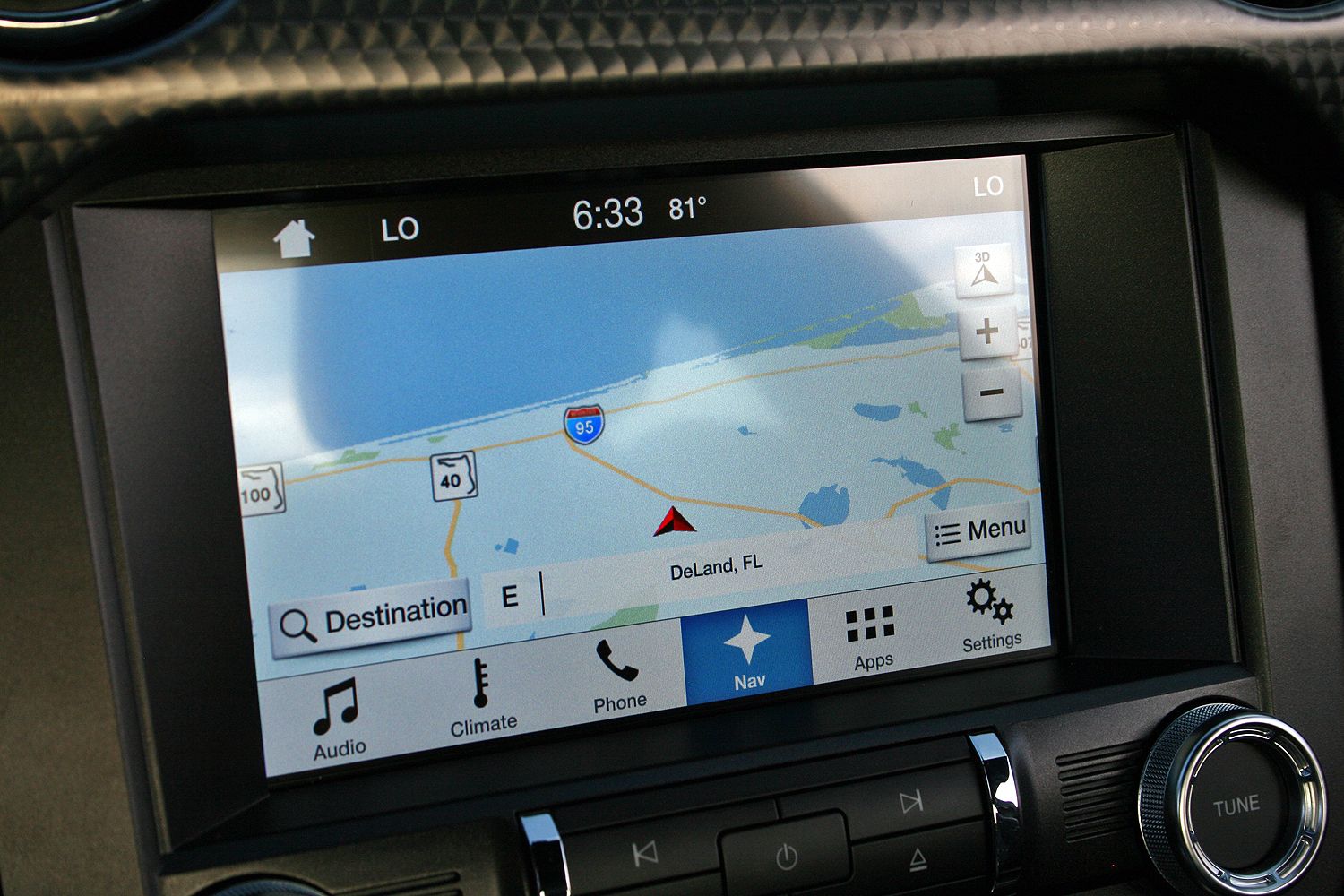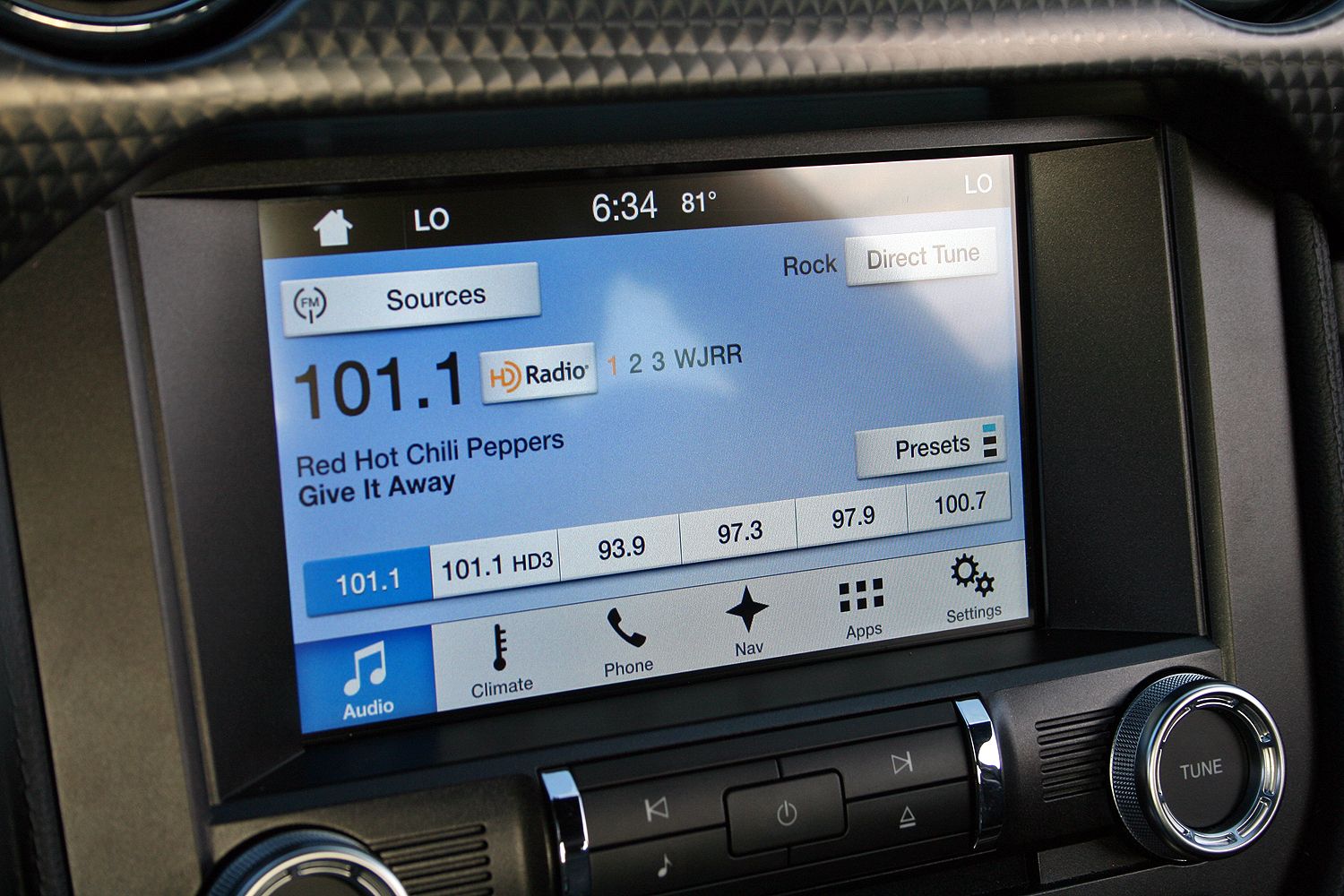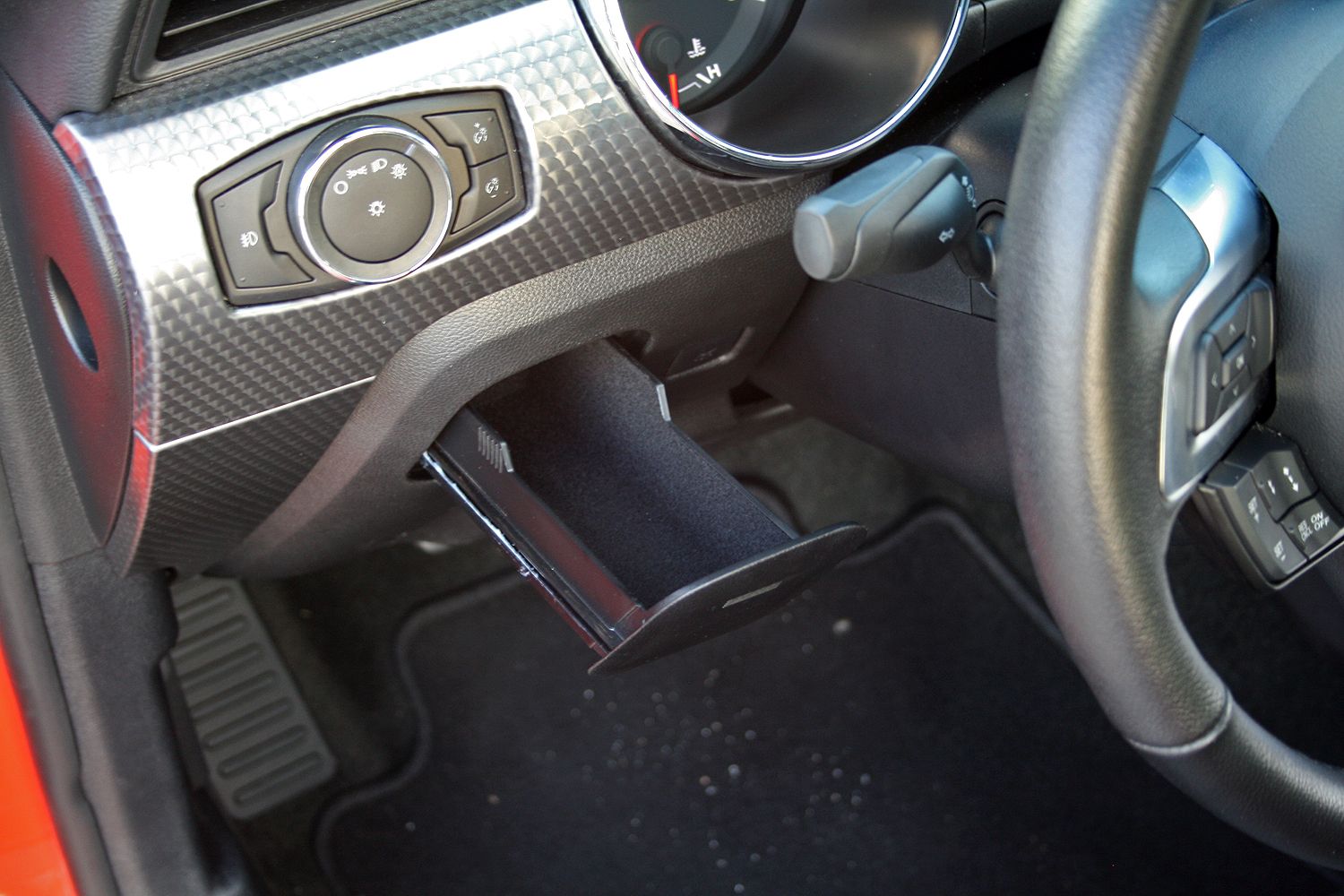Few cars have survived time so well. It was 1964 when Ford debuted the Mustang – its so-called Pony Car that inspired an entire category of automobiles, while raking in profits for the Blue Oval. The car ranged from the “secretary’s special” to the V-8 powerhouses that legends are made of. Only perhaps the Chevrolet Camaro can rival the Mustang’s significance. Then again, the Mustang has been in continuous production, unlike the Chevy.
Now in its sixth generation, the Mustang has kept its retro styling but added a turbocharged four-cylinder as a mid-grade engine option, along with numerous improvements like the new independent rear suspension. On top of that, the sixth-gen ‘Stang, introduced for the 2015 model year, is Ford’s first truly global Mustang. America’s pony car now sells in regions around the world in both left- and right-hand drive configurations.
The Mustang still comes standard with a V-6 and a manual transmission, and the traditionalist’s choice continues to be the 5.0-liter V-8. Nestled nicely between the two is Ford’s 2.3-liter EcoBoost four-cylinder. Don’t let the cylinder count fool you – the EcoBoost isn’t a wimp. Ford says it kicks out an impressive 310 horsepower and 320 pound-feet of torque. That’s Mustang GT power from just six years ago.
So what’s it like to have a four-cylinder pony car? To find out, I spent a week with the 2016 Mustang EcoBoost. My tester came fitted with the optional Performance Package, thankfully adding a limited slip rear differential, summer tires, heavy-duty front springs, larger brakes, a larger radiator, a thicker rear sway bar, and a specific calibration of the ABS and stability control systems. Needless to say, this pony was built to run. But would its heart hold out?
Continue reading for the full review.
2016 Ford Mustang EcoBoost – Driven
- Make: Array
- Model: 2016 Ford Mustang EcoBoost – Driven
- Engine/Motor: inline-4
- Horsepower: 310 @ 5500
- Torque: 320 @ 3000
- Transmission: six-speed manual
- [do not use] Vehicle Model: Array
Video Review
Exterior
The sixth generation Mustang is already two years old, but it still looks fresh. Well, fresh if you don’t mind it looking like the fifth-generation Mustang that debuted for 2005. Okay, the cars are very different when seen side by side, but the similarities are definitely there. The sixth-gen car is by far more angular and aggressive looking, but still shares the fifth-gen’s overall shape and basic styling. Nevertheless, the 2016 Mustang is still attractive.
In fact, the car received an unexpected level of attention during its stay in my driveway. Folks in the grocery store parking lot made passing comments like, “Nice Mustang,” while several guys at my barber shop tried to argue with me saying, “a car that good-looking can’t have a four-cylinder. Are you sure you know what you’re talking about?” I even got waves from other motorists. I drive a lot of flashy products, but it seems people really identify with the Mustang.
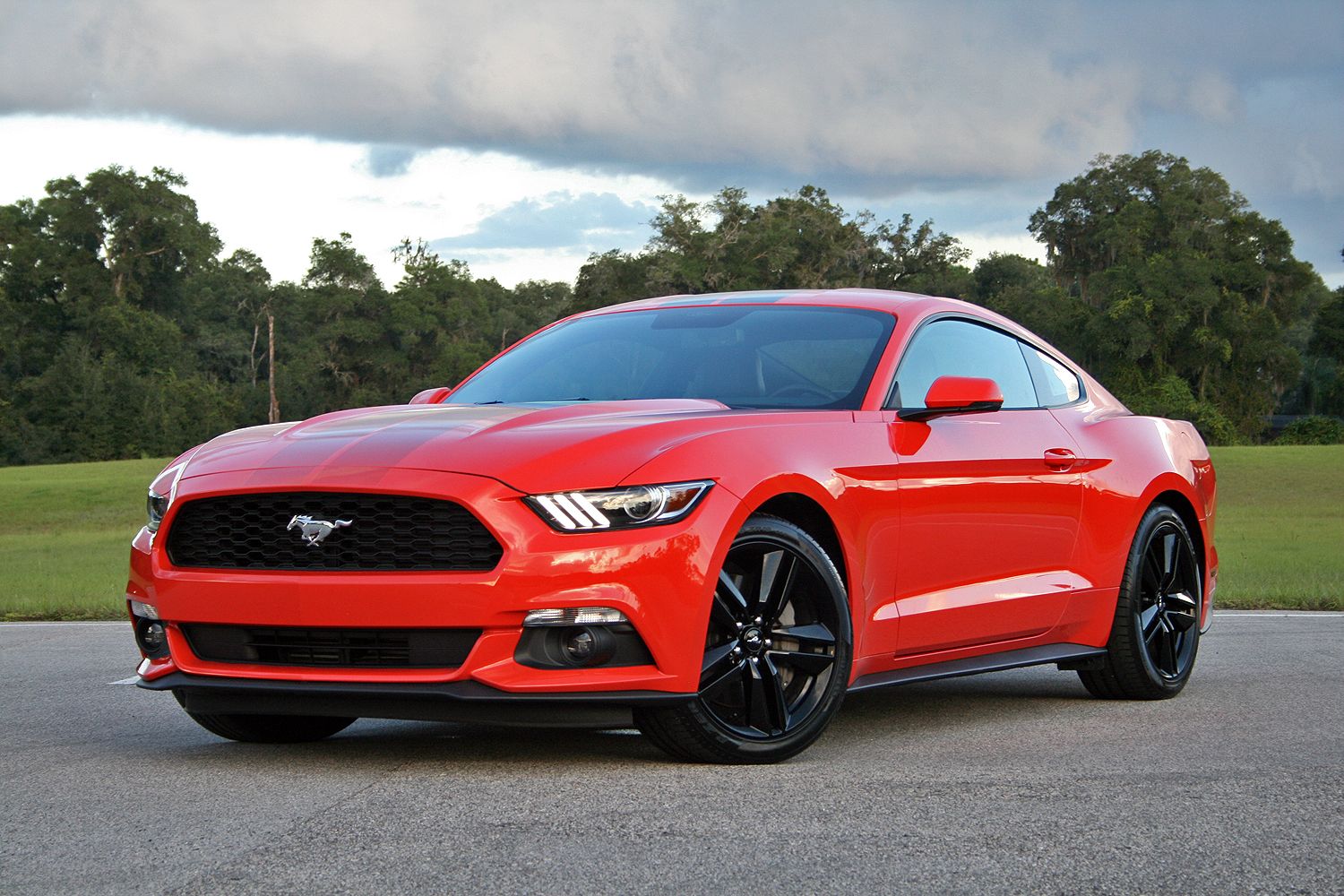
|
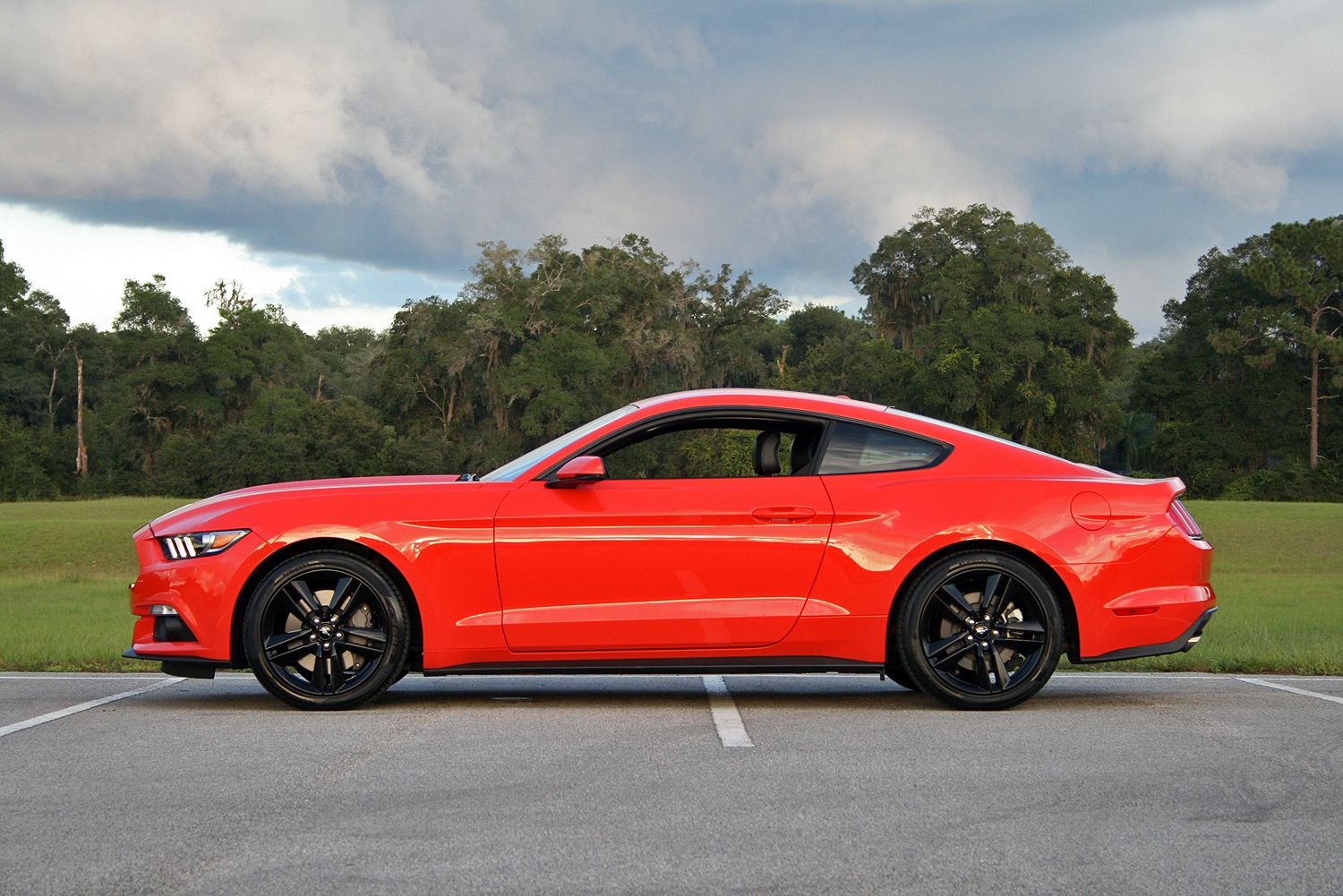
|
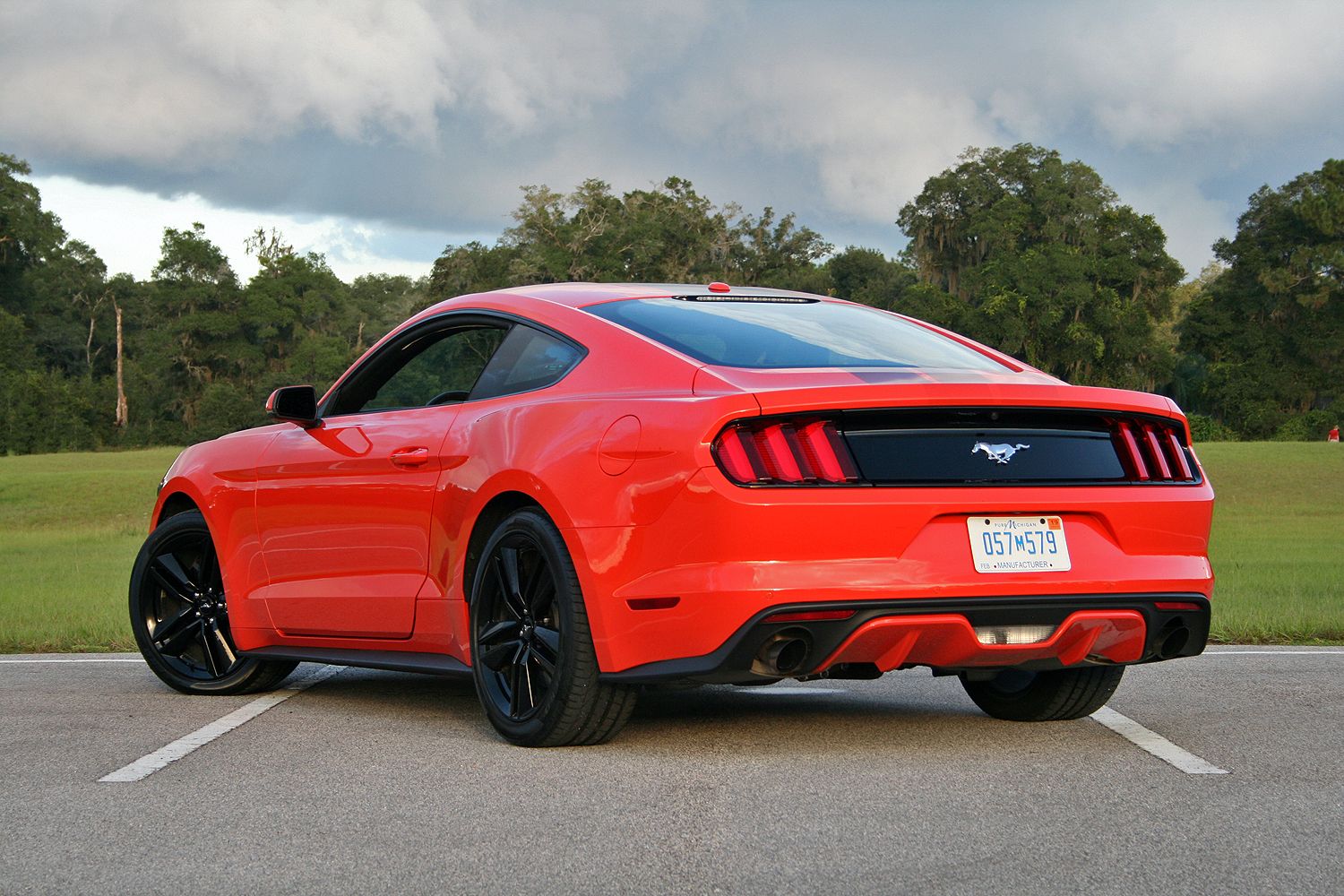
|
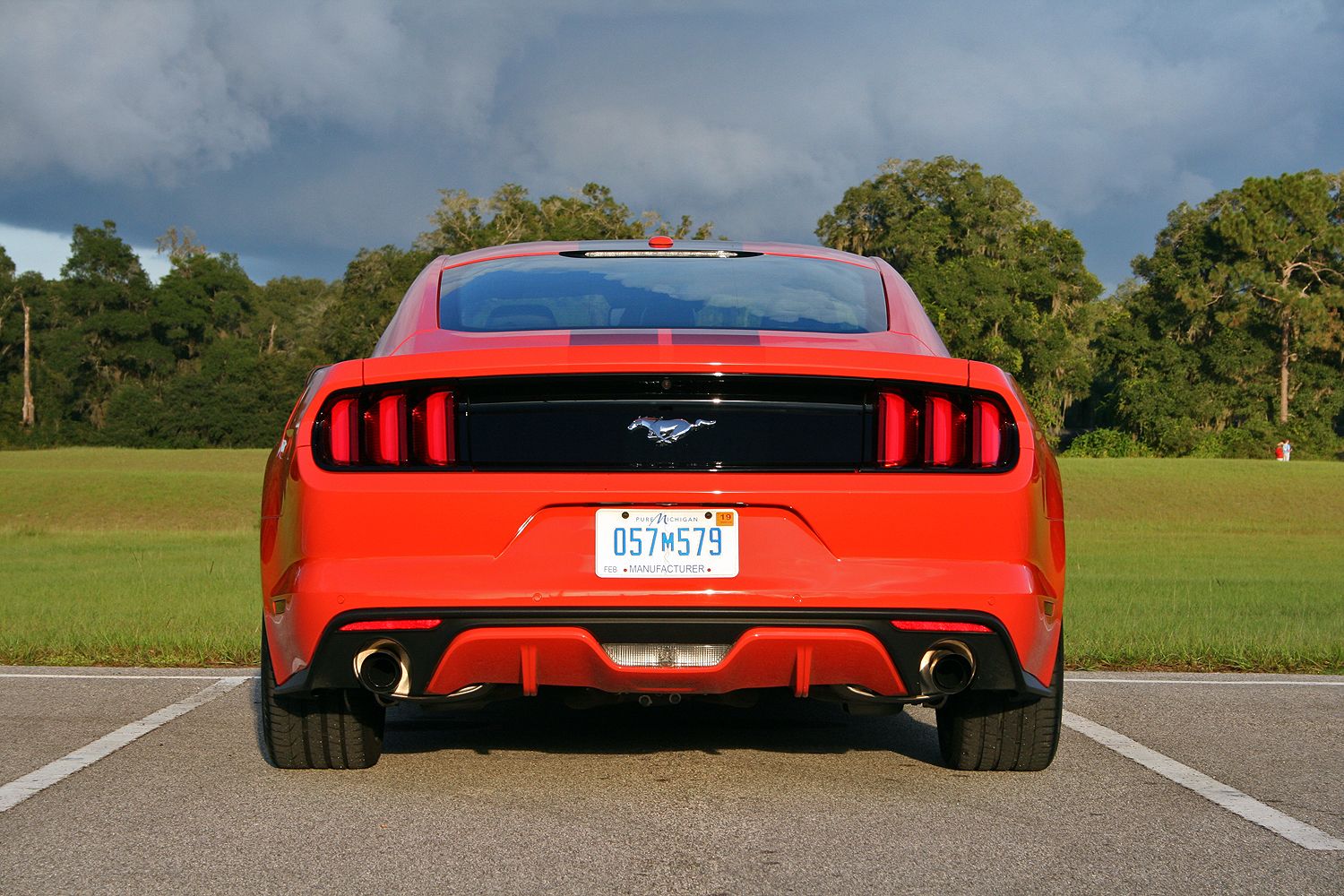
|
More objectively, the car wears a bright color called Competition Orange. It is complemented by the “Over the Top” black racing stripe, a $475 option. The black, 19-inch wheels are part of the Performance Package, and come wrapped in 255/40R-series summer performance rubber. The Performance Package also deletes the rear spoiler, giving the back of the car a sleeker appearance. Down low, the rear of the car features a diffuser-like element with a center-mounted reverse light. Dual exhaust pipes protrude on either side of the diffuser, even on this four-cylinder model.
The Mustang’s presence isn’t lost at night. The headlights are accented by LED daytime running lights that always remain on. The lower fog lights help light the sides of the road, which is especially helpful when turning. The taillights continue the sequential turn signal feature found in Mustangs of old and revived later in the fifth-generation’s life cycle. The side mirrors also boast the Mustang logo as puddle lights.
Interior
Once inside, the Mustang provides a comfortable place to sit. The interior is mostly dark thanks to black plastics and leather, but has several touches of bright chrome scattered about. The Performance Package also adds the faux turned-aluminum dash accent and the two gauges atop the center stack.
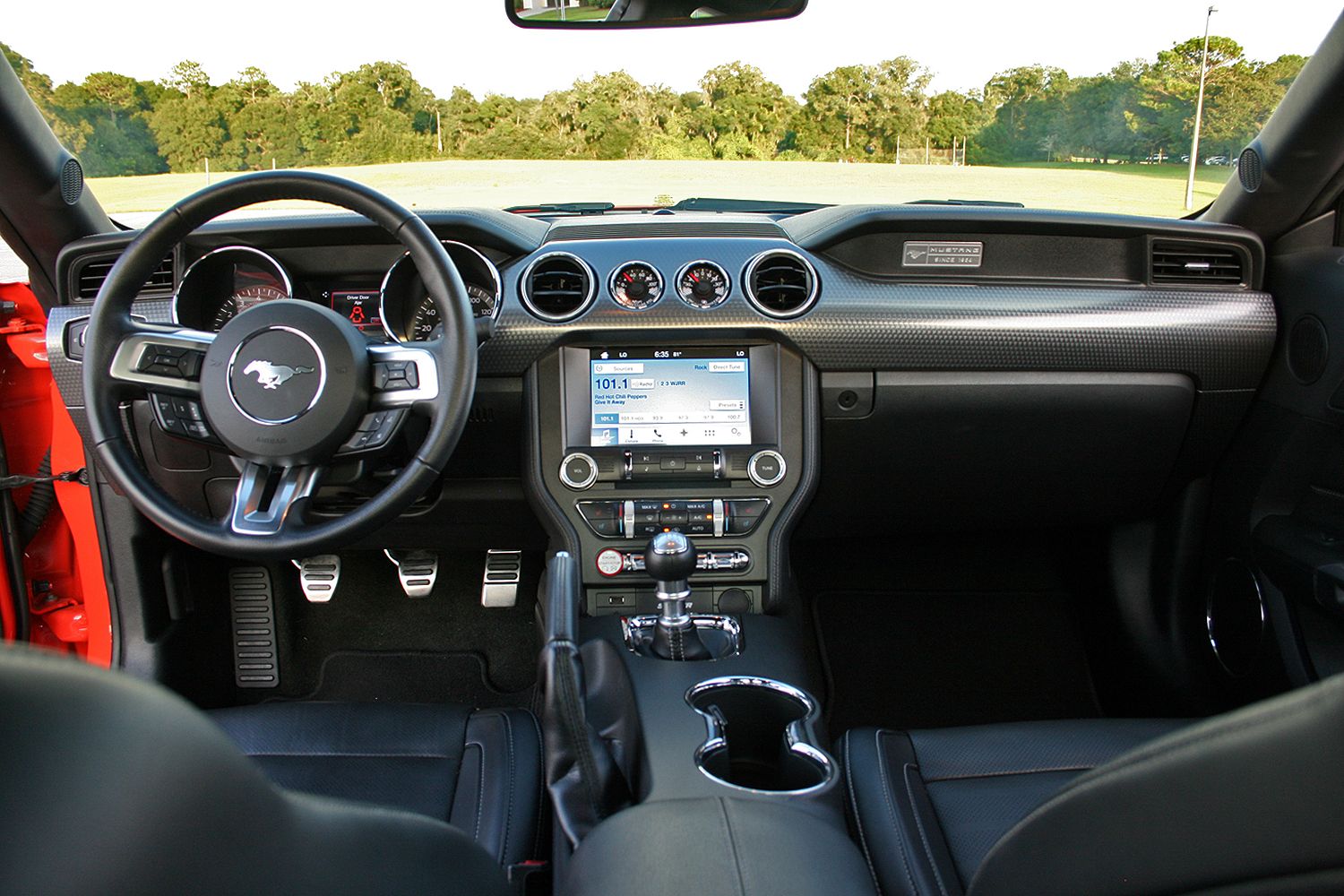
|
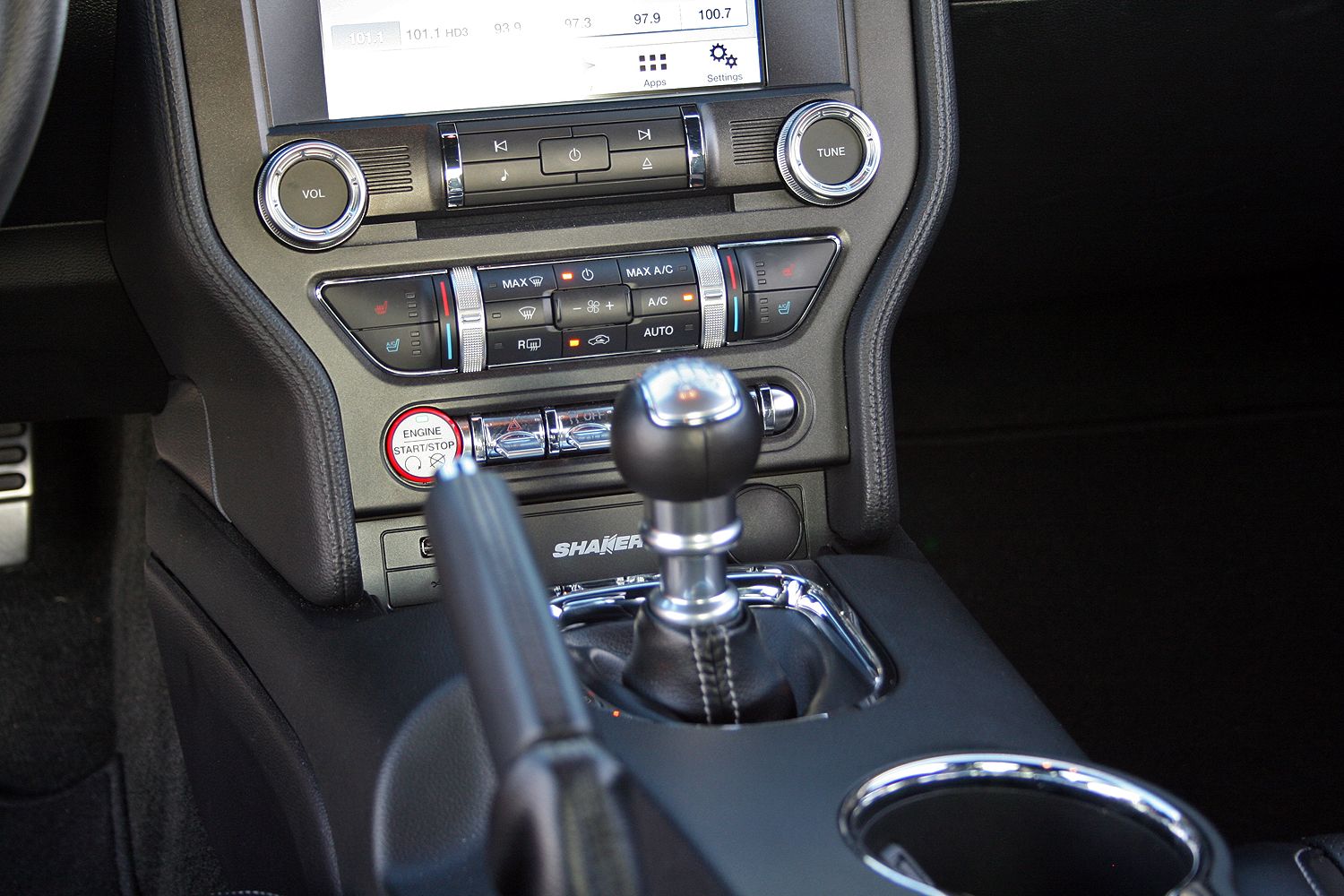
|
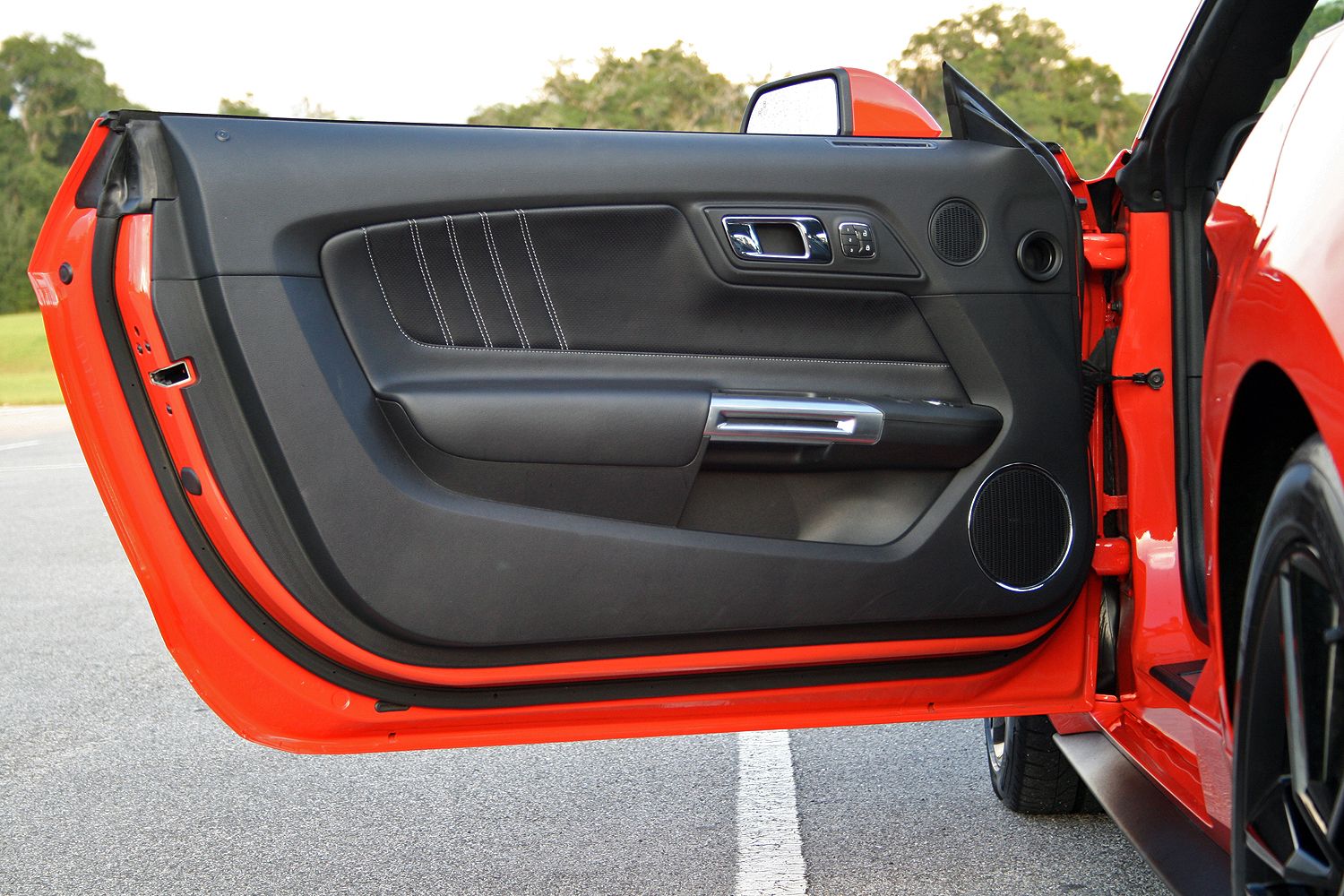
|
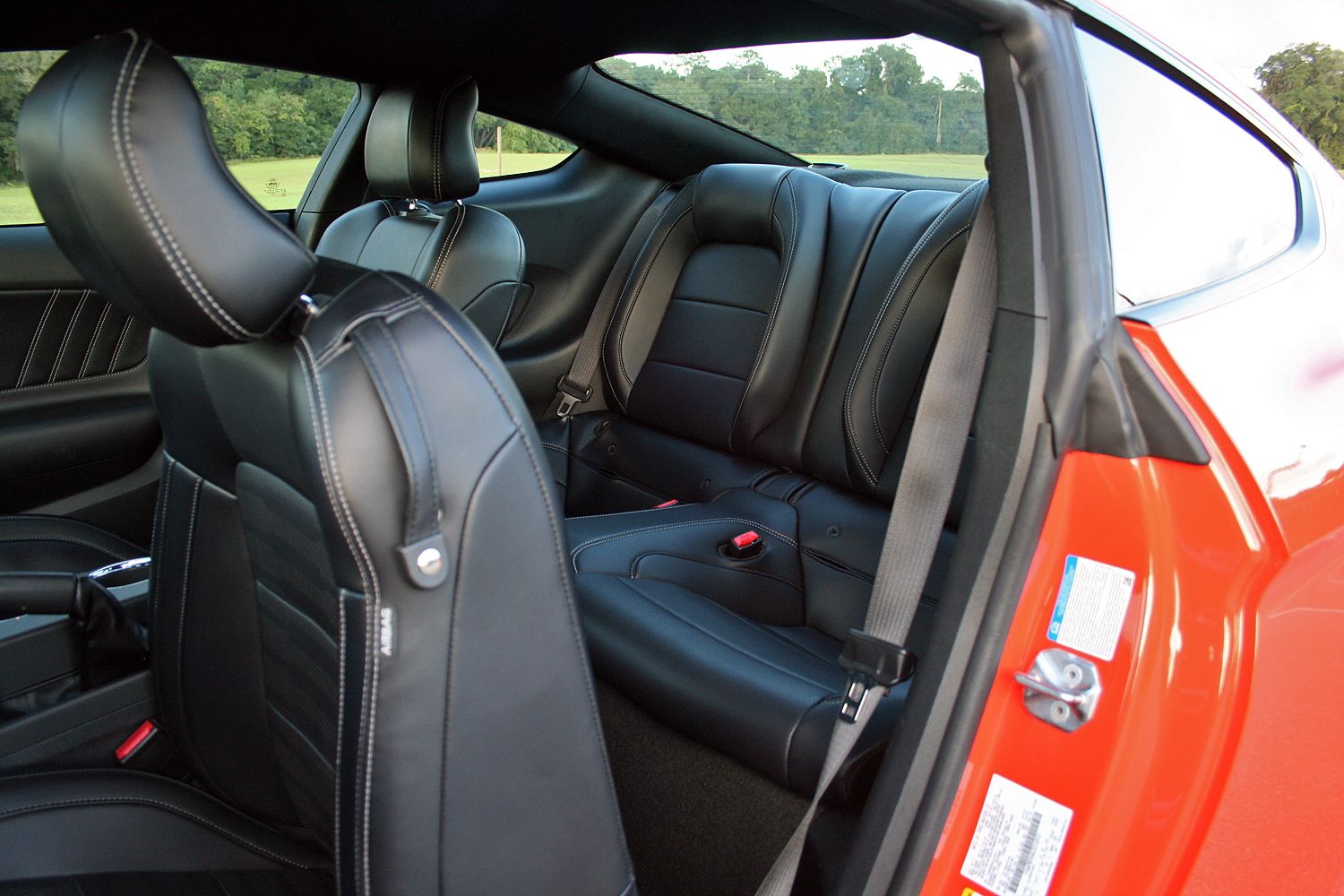
|
The Mustang continues its legacy of being a 2+2, offering comfortable room for two in the front seats, and smaller, less comfortable seats in back for short hauls, kids, or gear. My four-year-old and her car seat fit nicely back here, though having her climb in and out was a challenge.
Ergonomics are good and buttons are placed well. The seats are easily adjustable and the manual tilting/telescoping steering column allows for perfect placement. The shifter also falls nicely at the driver’s right hand, making it a joy to row through the six-speed’s gate. Ford designers have not let the fighter plane theme escape them. The toggle switches just ahead of the shifter look like they belong in WWII-era P-51. The dash plaque on the passenger side furthers the special feeling. The optional Shaker audio system is also worth the upgrade. It’s bundled in the 201A options group, which also includes memory functions for the driver's seat and side mirrors, ambient interior lighting, and the Blind Spot Information System with cross-traffic alert.
Functionality wise, the Mustang works at being a car. The cup holders are nice and large, the gauges are easy to read, the driver information center provides tons of helpful information, and outward visibility is surprising. I did find myself wishing for a digital speedometer as the analog gauge can be a bit taxing to read at a quick glance. Trunk space is also respectable and the rear seats do fold down, allowing for larger items. The trunk’s smallish opening is its biggest downfall. The interior is mostly quiet, but it can get noisy on broken pavement and when revving the engine towards redline.
When it's time to have fun, the Mustang's interior provides the right equipment. The driver information screen features “Track Apps,” which includes a handful of useful data-gathering tools to quantify your driving skills. There’s a 0-to-30, 0-to-60, and 0-100 mph timers, eighth- and quarter-mile timers, and even braking distance measurements. Best of all, the acceleration timers start with a Christmas tree, just like at a drag strip. Three yellows and a green give the driver a visual countdown at to start the run. Just make sure you’re not on a public road or leaving Cars & Coffee when using the system.
Drivetrain
At the heart of the Mustang EcoBoost is well… an EcoBoost. By now you all know the EcoBoost moniker as Ford’s marketing term for turbocharging. In this case, the Mustang comes with an all-aluminum, 2.3-liter four-cylinder with dual overhead cams operating four valves per cylinder, along with direct fuel injection and a twin-scroll turbocharger.
That last bit of tech separates the exhaust ports into two chambers that run all the way to the turbo. This gives the turbine a more constant flow of exhaust gas to ensure faster spool-up and less lag. The result is a four-cylinder making an impressive 310 horsepower at 5,500 rpm and 320 pound-feet of torque at just 3,000 rpm. Those numbers rival what the 2010 Ford Mustang GT’s 4.6-liter V-8 was capable of (315 hp, 325 lb.-ft). Technology is a wonderful thing.
Mated to the longitudinally mounted engine is a six-speed manual transmission. The transmission sends power only to the rear wheels, just as God intended. Thanks to the Performance Package, the rear differential is upgraded to a limited slip unit with 3.55 gears. These shorter gears help the ‘Stang off the line. Get the 1-2-3 shift right, and the EcoBoost will hit 60 mph in 5.5 seconds. And yes, you read that right. The manual transmission’s gearing does require a shift to third before hitting 60 mph. That’s why the automatic-equipped EcoBoost posts a slightly faster 0-to-60 mph time of 5.2 seconds – at least according to Read more about the Chevrolet Camaro here. ->http://www.caranddriver.com/reviews/2015-ford-mustang-ecoboost-automatic-test-reviewtesting.
The EcoBoost is a blast to drive. You’ll quickly learn, however, the engine needs its revs before it wakes up. Power only starts pouring on at 3,000 rpm and doesn’t feel fully awake until 5,000 rpm. It does have a surprising amount of low-end torque for around-town driving, but in order to maximize the turbocharger, you’ll need to keep your foot down. That’s typical of any turbo-four, so old-school Mustang buyers will have a small learning curve. No big deal though, as the EcoBoost provides plenty of power and with respectable fuel economy estimates from the EPA. Around town, the 2.3-liter is estimated to get 22 mpg, while the highway sees 31 mpg. The EPA estimates average fuel economy will be around 25 mpg. I averaged right at 21 mpg combined. The engine also requires premium fuel for its maximum power, though regular grade is fine in a pinch.
Here’s the problem though: the Mustang EcoBoost looks great on paper, but lacks that muscle car feel and emotional appeal of a V-8. The car is fun and can be quick when driven correctly, but it just lacks that V-8 rawness, that down-low torque and oh-so-sweet exhaust note from the 5.0-liter Coyote. It’s widely known Ford uses synthesized engine sounds though the sound system to weed out the unattractive noises and pushing the right ones. The same can be said for the base V-6 Mustang, so this burden isn’t solely on the EcoBoost. Nevertheless, it’s impossible to argue against the EcoBoost’s advantages and technological achievements.
Find out more about the Dodge Challenger here.0
The Mustang proved to be a fun, tossable car with a great shifter and predictable clutch. Those things go a long way to making a car enjoyable. The electronic steering offers three modes: Comfort, Normal, and Sport – each getting progressively stiffer and more direct. I preferred the Sport setting even around town. Likewise, the car features drive modes that includes Normal, Sport, Track, and Snow/Wet. Each mode dials in throttle response traction control, and stability control settings optimized for each situation. Both Normal and Sport are great for public roads, while Track is best used, well, on track. The Snow/Wet setting did come in handy during a torrential downpour as it limits power to help avoid any unintended tail-out moves.
Outward visibility is good, leading to confident driving.. That’s aided by comfortable and supportive seats. I would love to have had the optional Recaro seats, but the standard front buckets work just fine for most driving situations. Like I mentioned before, the engine’s sound isn’t the most appealing. That doesn’t matter so much after the 320 pound-feet of torque take over and push the car toward fun.
Conclusion
The 2017 Mustang’s price has increased slightly over the 2016’s but both still share a very close relation. The least-expensive EcoBoost Mustang can be had at $25,920. Opting for the EcoBoost Premium, like my tester, pushes the price to $31,715. For the 2016 model year, my tester carried a starting price of $29,300. Adding the Premium Package brings quite a number of upgrades, including SYNC 3, larger wheels, and heated and cooled front seats with leather upholstery.
My tester came with several optional extras. These included the Equipment Group 201A ($1,795); enhanced security system ($395); Over-The-Top Racing Stripe ($475); Adaptive Cruise Control ($1,195); Performance Package ($1,995); Reverse Park Assist ($295); and Voice-Activated Navigation ($795). After the $900 destination fee, the total price came to $37,540.
Competition
Chevrolet Camaro
The Mustang’s biggest competition comes from the Chevy Camaro. The Camaro is all new for the 2016 model year but carries familiar exterior looks and a completely new interior. Comfort and ergonomics are up while new technology makes the car feel modern.
Unlike the Ford, Chevy uses its four-cylinder as the base engine while its V-6 is the mid-grade choice. This naturally aspirated mill makes 335 horsepower and 284 pound-feet of torque, making it a rather close competitor to the EcoBoost. The 3.6-liter V-6 can push the Camaro to 60 mph in 5.2 seconds when mated to the available eight-speed automatic. A six-speed manual comes standard.
Prices for the V-6 Camaro start at $29,090, making it a bit more pricey than the base EcoBoost Mustang. The price can jump into the mid-$40,000 area with the 1LT trim and a handful of options. Customers can also opt for the 1LE Performance Package on the V-6 if they plan on spending time on the track.
Read more about the Chevrolet Camaro here.
Dodge Challenger
The Challenger is arguably the most traditional “muscle car” here. Its long, beefy body is complemented by classic and retro themes from Mopar’s glory days. The Challenger got a very-much-needed refresh for 2015, which included a welcomed new interior.
Engine choices are plenty, but it’s the 3.6-liter Pentastar V-6 that competes here. It makes 305 horsepower and 258 pound-feet of torque. It’s the least powerful of the group, and sadly, the Challenger is also the heaviest. The big Dodge weights right at 4,000 pounds fully dressed. It’s 0-to-60 mph time shows, too, coming in at 6.0 seconds. Still, the Challenger has the proper look of a muscle car.
Pricing wise, the V-6 Challenger starts at $26,995. Opting for the better-equipped SXT Package pushes the price to $29,995. For those itching for more power, the Hemi V-8-equipped R/T can be had for $31,995.
Find out more about the Dodge Challenger here.
Conclusion
The 2016 Ford Mustang EcoBoost is a heck of a car. Ford somehow managed to squeeze 310 horsepower and 320 pound-feet of torque from a four-cylinder thanks to a turbocharger, threw it in a rear-wheel-drive car, and gave the thing a proper six-speed manual transmission. What’s not to love? Again, that’s on paper. Behind the wheel, the car does feel a bit odd without its V-8 rumble, although the mid- and upper-range power is impressive.
What’s more, the EcoBoost proves respectable fuel economy numbers capable of surviving fuel price hikes. Best of all, the EcoBoost can be had at a decent price affordable by most folks in the market for a new car. $26,000 ain’t bad for a 310-horse, 2+2 coupe. There’s a lot to be said for that.
The Mustang’s biggest threat isn’t itself, however, it's from the competition. Despite its age, the Challenger is selling like crazy and the new, sixth-generation Camaro is gaining steam in the market. The Mustang certainly has a lot to live up to. Ford won't need to worry too much – the Mustang EcoBoost is a heck of a sports car.

